
9.3 / 10
Nubra Valley
Nubra Valley, India
Overview
Explore Nubra Valley's sand dunes, double-humped camels, ancient monasteries & hot springs. Find expert tips on permits, accommodation.
Best Selling Nubra Valley Tours
Discover desert-in-the-sky contrasts with Bactrian camel rides on white sand dunes, ancient monasteries, hot springs, and spectacular mountain vistas.
Best Family Tours For Nubra Valley
Create unforgettable memories riding double-humped camels across sand dunes, exploring ancient monasteries, meeting local families, and enjoying comfortable.
Cheapest Tours For Nubra Valley
Experience this high-altitude desert wonderland economically with shared transportation, comfortable guesthouses, guided visits to sand dunes, monasteries.
Rental cars for Nubra Valley

Nubra Valley to Kakinada taxi | ||
| Honda WRV Petrol MT Sunroof | ₹4500/day | Book Now |
| Alto 800 Petrol | ₹1800/day | Book Now |
| Tata Tiago MT Diesel | ₹1800/day | Book Now |
| Hyundai Aura MT Diesel | ₹2000/day | Book Now |
| Maruti Celerio AT Petrol | ₹2000/day | Book Now |
| Maruti Swift MT Petrol | ₹12/Km | Book Now |
| Hyundai Creata MT Diesel | ₹4000/day | Book Now |
| Hyundai I10 grand MT Petrol | ₹2000/day | Book Now |
| Hyundai i20 MT Diesel: | ₹3200/day | Book Now |
| Mahindra XUV 300, Sunroof MT | ₹4200/day | Book Now |
| Hyundai I10 grant MT Petrol | ₹2200/day | Book Now |
| Maruti S-Cross | ₹3500/day | Book Now |
| Maruti Breeza MT/AT Diesel | ₹3800/day | Book Now |
| Honda Amaze MT Diesel | ₹3200/day | Book Now |
| Maruti Dzire MT Diesel | ₹3000/day | Book Now |

Nubra Valley to Manali taxi | ||
| Honda WRV Petrol MT Sunroof | ₹4500/day | Book Now |
| Alto 800 Petrol | ₹1800/day | Book Now |
| Tata Tiago MT Diesel | ₹1800/day | Book Now |
| Hyundai Aura MT Diesel | ₹2000/day | Book Now |
| Maruti Celerio AT Petrol | ₹2000/day | Book Now |
| Maruti Swift MT Petrol | ₹12/Km | Book Now |
| Hyundai Creata MT Diesel | ₹4000/day | Book Now |
| Hyundai I10 grand MT Petrol | ₹2000/day | Book Now |
| Hyundai i20 MT Diesel: | ₹3200/day | Book Now |
| Mahindra XUV 300, Sunroof MT | ₹4200/day | Book Now |
| Hyundai I10 grant MT Petrol | ₹2200/day | Book Now |
| Maruti S-Cross | ₹3500/day | Book Now |
| Maruti Breeza MT/AT Diesel | ₹3800/day | Book Now |
| Honda Amaze MT Diesel | ₹3200/day | Book Now |
| Maruti Dzire MT Diesel | ₹3000/day | Book Now |

Nubra Valley to Shimla taxi | ||
| Honda WRV Petrol MT Sunroof | ₹4500/day | Book Now |
| Alto 800 Petrol | ₹1800/day | Book Now |
| Tata Tiago MT Diesel | ₹1800/day | Book Now |
| Hyundai Aura MT Diesel | ₹2000/day | Book Now |
| Maruti Celerio AT Petrol | ₹2000/day | Book Now |
| Maruti Swift MT Petrol | ₹12/Km | Book Now |
| Hyundai Creata MT Diesel | ₹4000/day | Book Now |
| Hyundai I10 grand MT Petrol | ₹2000/day | Book Now |
| Hyundai i20 MT Diesel: | ₹3200/day | Book Now |
| Mahindra XUV 300, Sunroof MT | ₹4200/day | Book Now |
| Hyundai I10 grant MT Petrol | ₹2200/day | Book Now |
| Maruti S-Cross | ₹3500/day | Book Now |
| Maruti Breeza MT/AT Diesel | ₹3800/day | Book Now |
| Honda Amaze MT Diesel | ₹3200/day | Book Now |
| Maruti Dzire MT Diesel | ₹3000/day | Book Now |

Nubra Valley to Solan taxi | ||
| Honda WRV Petrol MT Sunroof | ₹4500/day | Book Now |
| Alto 800 Petrol | ₹1800/day | Book Now |
| Tata Tiago MT Diesel | ₹1800/day | Book Now |
| Hyundai Aura MT Diesel | ₹2000/day | Book Now |
| Maruti Celerio AT Petrol | ₹2000/day | Book Now |
| Maruti Swift MT Petrol | ₹12/Km | Book Now |
| Hyundai Creata MT Diesel | ₹4000/day | Book Now |
| Hyundai I10 grand MT Petrol | ₹2000/day | Book Now |
| Hyundai i20 MT Diesel: | ₹3200/day | Book Now |
| Mahindra XUV 300, Sunroof MT | ₹4200/day | Book Now |
| Hyundai I10 grant MT Petrol | ₹2200/day | Book Now |
| Maruti S-Cross | ₹3500/day | Book Now |
| Maruti Breeza MT/AT Diesel | ₹3800/day | Book Now |
| Honda Amaze MT Diesel | ₹3200/day | Book Now |
| Maruti Dzire MT Diesel | ₹3000/day | Book Now |
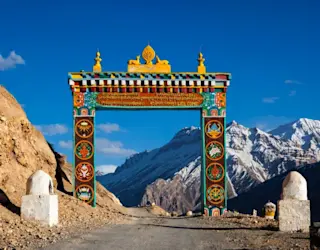
Nubra Valley to Leh taxi | ||
| Honda WRV Petrol MT Sunroof | ₹4500/day | Book Now |
| Alto 800 Petrol | ₹1800/day | Book Now |
| Tata Tiago MT Diesel | ₹1800/day | Book Now |
| Hyundai Aura MT Diesel | ₹2000/day | Book Now |
| Maruti Celerio AT Petrol | ₹2000/day | Book Now |
| Maruti Swift MT Petrol | ₹12/Km | Book Now |
| Hyundai Creata MT Diesel | ₹4000/day | Book Now |
| Hyundai I10 grand MT Petrol | ₹2000/day | Book Now |
| Hyundai i20 MT Diesel: | ₹3200/day | Book Now |
| Mahindra XUV 300, Sunroof MT | ₹4200/day | Book Now |
| Hyundai I10 grant MT Petrol | ₹2200/day | Book Now |
| Maruti S-Cross | ₹3500/day | Book Now |
| Maruti Breeza MT/AT Diesel | ₹3800/day | Book Now |
| Honda Amaze MT Diesel | ₹3200/day | Book Now |
| Maruti Dzire MT Diesel | ₹3000/day | Book Now |

Nubra Valley to Faridabad taxi | ||
| Honda WRV Petrol MT Sunroof | ₹4500/day | Book Now |
| Alto 800 Petrol | ₹1800/day | Book Now |
| Tata Tiago MT Diesel | ₹1800/day | Book Now |
| Hyundai Aura MT Diesel | ₹2000/day | Book Now |
| Maruti Celerio AT Petrol | ₹2000/day | Book Now |
| Maruti Swift MT Petrol | ₹12/Km | Book Now |
| Hyundai Creata MT Diesel | ₹4000/day | Book Now |
| Hyundai I10 grand MT Petrol | ₹2000/day | Book Now |
| Hyundai i20 MT Diesel: | ₹3200/day | Book Now |
| Mahindra XUV 300, Sunroof MT | ₹4200/day | Book Now |
| Hyundai I10 grant MT Petrol | ₹2200/day | Book Now |
| Maruti S-Cross | ₹3500/day | Book Now |
| Maruti Breeza MT/AT Diesel | ₹3800/day | Book Now |
| Honda Amaze MT Diesel | ₹3200/day | Book Now |
| Maruti Dzire MT Diesel | ₹3000/day | Book Now |
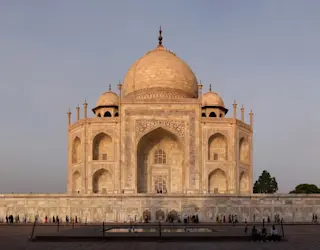
Nubra Valley to Taj Mahal taxi | ||
| Honda WRV Petrol MT Sunroof | ₹4500/day | Book Now |
| Alto 800 Petrol | ₹1800/day | Book Now |
| Tata Tiago MT Diesel | ₹1800/day | Book Now |
| Hyundai Aura MT Diesel | ₹2000/day | Book Now |
| Maruti Celerio AT Petrol | ₹2000/day | Book Now |
| Maruti Swift MT Petrol | ₹12/Km | Book Now |
| Hyundai Creata MT Diesel | ₹4000/day | Book Now |
| Hyundai I10 grand MT Petrol | ₹2000/day | Book Now |
| Hyundai i20 MT Diesel: | ₹3200/day | Book Now |
| Mahindra XUV 300, Sunroof MT | ₹4200/day | Book Now |
| Hyundai I10 grant MT Petrol | ₹2200/day | Book Now |
| Maruti S-Cross | ₹3500/day | Book Now |
| Maruti Breeza MT/AT Diesel | ₹3800/day | Book Now |
| Honda Amaze MT Diesel | ₹3200/day | Book Now |
| Maruti Dzire MT Diesel | ₹3000/day | Book Now |
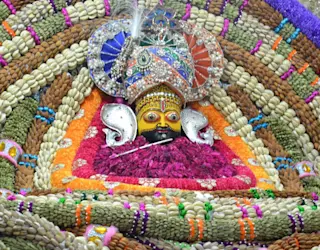
Nubra Valley to Khatushyam Temple taxi | ||
| Honda WRV Petrol MT Sunroof | ₹4500/day | Book Now |
| Alto 800 Petrol | ₹1800/day | Book Now |
| Tata Tiago MT Diesel | ₹1800/day | Book Now |
| Hyundai Aura MT Diesel | ₹2000/day | Book Now |
| Maruti Celerio AT Petrol | ₹2000/day | Book Now |
| Maruti Swift MT Petrol | ₹12/Km | Book Now |
| Hyundai Creata MT Diesel | ₹4000/day | Book Now |
| Hyundai I10 grand MT Petrol | ₹2000/day | Book Now |
| Hyundai i20 MT Diesel: | ₹3200/day | Book Now |
| Mahindra XUV 300, Sunroof MT | ₹4200/day | Book Now |
| Hyundai I10 grant MT Petrol | ₹2200/day | Book Now |
| Maruti S-Cross | ₹3500/day | Book Now |
| Maruti Breeza MT/AT Diesel | ₹3800/day | Book Now |
| Honda Amaze MT Diesel | ₹3200/day | Book Now |
| Maruti Dzire MT Diesel | ₹3000/day | Book Now |
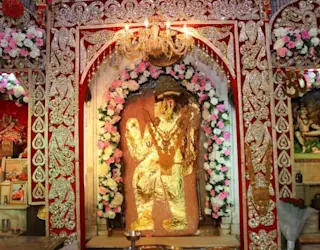
Nubra Valley to Mehandipur Balaji taxi | ||
| Honda WRV Petrol MT Sunroof | ₹4500/day | Book Now |
| Alto 800 Petrol | ₹1800/day | Book Now |
| Tata Tiago MT Diesel | ₹1800/day | Book Now |
| Hyundai Aura MT Diesel | ₹2000/day | Book Now |
| Maruti Celerio AT Petrol | ₹2000/day | Book Now |
| Maruti Swift MT Petrol | ₹12/Km | Book Now |
| Hyundai Creata MT Diesel | ₹4000/day | Book Now |
| Hyundai I10 grand MT Petrol | ₹2000/day | Book Now |
| Hyundai i20 MT Diesel: | ₹3200/day | Book Now |
| Mahindra XUV 300, Sunroof MT | ₹4200/day | Book Now |
| Hyundai I10 grant MT Petrol | ₹2200/day | Book Now |
| Maruti S-Cross | ₹3500/day | Book Now |
| Maruti Breeza MT/AT Diesel | ₹3800/day | Book Now |
| Honda Amaze MT Diesel | ₹3200/day | Book Now |
| Maruti Dzire MT Diesel | ₹3000/day | Book Now |

Nubra Valley to Neemrana taxi | ||
| Honda WRV Petrol MT Sunroof | ₹4500/day | Book Now |
| Alto 800 Petrol | ₹1800/day | Book Now |
| Tata Tiago MT Diesel | ₹1800/day | Book Now |
| Hyundai Aura MT Diesel | ₹2000/day | Book Now |
| Maruti Celerio AT Petrol | ₹2000/day | Book Now |
| Maruti Swift MT Petrol | ₹12/Km | Book Now |
| Hyundai Creata MT Diesel | ₹4000/day | Book Now |
| Hyundai I10 grand MT Petrol | ₹2000/day | Book Now |
| Hyundai i20 MT Diesel: | ₹3200/day | Book Now |
| Mahindra XUV 300, Sunroof MT | ₹4200/day | Book Now |
| Hyundai I10 grant MT Petrol | ₹2200/day | Book Now |
| Maruti S-Cross | ₹3500/day | Book Now |
| Maruti Breeza MT/AT Diesel | ₹3800/day | Book Now |
| Honda Amaze MT Diesel | ₹3200/day | Book Now |
| Maruti Dzire MT Diesel | ₹3000/day | Book Now |

Nubra Valley to Gurgaon taxi | ||
| Honda WRV Petrol MT Sunroof | ₹4500/day | Book Now |
| Alto 800 Petrol | ₹1800/day | Book Now |
| Tata Tiago MT Diesel | ₹1800/day | Book Now |
| Hyundai Aura MT Diesel | ₹2000/day | Book Now |
| Maruti Celerio AT Petrol | ₹2000/day | Book Now |
| Maruti Swift MT Petrol | ₹12/Km | Book Now |
| Hyundai Creata MT Diesel | ₹4000/day | Book Now |
| Hyundai I10 grand MT Petrol | ₹2000/day | Book Now |
| Hyundai i20 MT Diesel: | ₹3200/day | Book Now |
| Mahindra XUV 300, Sunroof MT | ₹4200/day | Book Now |
| Hyundai I10 grant MT Petrol | ₹2200/day | Book Now |
| Maruti S-Cross | ₹3500/day | Book Now |
| Maruti Breeza MT/AT Diesel | ₹3800/day | Book Now |
| Honda Amaze MT Diesel | ₹3200/day | Book Now |
| Maruti Dzire MT Diesel | ₹3000/day | Book Now |

Nubra Valley to Salasar Balaji taxi | ||
| Honda WRV Petrol MT Sunroof | ₹4500/day | Book Now |
| Alto 800 Petrol | ₹1800/day | Book Now |
| Tata Tiago MT Diesel | ₹1800/day | Book Now |
| Hyundai Aura MT Diesel | ₹2000/day | Book Now |
| Maruti Celerio AT Petrol | ₹2000/day | Book Now |
| Maruti Swift MT Petrol | ₹12/Km | Book Now |
| Hyundai Creata MT Diesel | ₹4000/day | Book Now |
| Hyundai I10 grand MT Petrol | ₹2000/day | Book Now |
| Hyundai i20 MT Diesel: | ₹3200/day | Book Now |
| Mahindra XUV 300, Sunroof MT | ₹4200/day | Book Now |
| Hyundai I10 grant MT Petrol | ₹2200/day | Book Now |
| Maruti S-Cross | ₹3500/day | Book Now |
| Maruti Breeza MT/AT Diesel | ₹3800/day | Book Now |
| Honda Amaze MT Diesel | ₹3200/day | Book Now |
| Maruti Dzire MT Diesel | ₹3000/day | Book Now |

Nubra Valley to Sariska National Park taxi | ||
| Honda WRV Petrol MT Sunroof | ₹4500/day | Book Now |
| Alto 800 Petrol | ₹1800/day | Book Now |
| Tata Tiago MT Diesel | ₹1800/day | Book Now |
| Hyundai Aura MT Diesel | ₹2000/day | Book Now |
| Maruti Celerio AT Petrol | ₹2000/day | Book Now |
| Maruti Swift MT Petrol | ₹12/Km | Book Now |
| Hyundai Creata MT Diesel | ₹4000/day | Book Now |
| Hyundai I10 grand MT Petrol | ₹2000/day | Book Now |
| Hyundai i20 MT Diesel: | ₹3200/day | Book Now |
| Mahindra XUV 300, Sunroof MT | ₹4200/day | Book Now |
| Hyundai I10 grant MT Petrol | ₹2200/day | Book Now |
| Maruti S-Cross | ₹3500/day | Book Now |
| Maruti Breeza MT/AT Diesel | ₹3800/day | Book Now |
| Honda Amaze MT Diesel | ₹3200/day | Book Now |
| Maruti Dzire MT Diesel | ₹3000/day | Book Now |

Nubra Valley to Sikar taxi | ||
| Honda WRV Petrol MT Sunroof | ₹4500/day | Book Now |
| Alto 800 Petrol | ₹1800/day | Book Now |
| Tata Tiago MT Diesel | ₹1800/day | Book Now |
| Hyundai Aura MT Diesel | ₹2000/day | Book Now |
| Maruti Celerio AT Petrol | ₹2000/day | Book Now |
| Maruti Swift MT Petrol | ₹12/Km | Book Now |
| Hyundai Creata MT Diesel | ₹4000/day | Book Now |
| Hyundai I10 grand MT Petrol | ₹2000/day | Book Now |
| Hyundai i20 MT Diesel: | ₹3200/day | Book Now |
| Mahindra XUV 300, Sunroof MT | ₹4200/day | Book Now |
| Hyundai I10 grant MT Petrol | ₹2200/day | Book Now |
| Maruti S-Cross | ₹3500/day | Book Now |
| Maruti Breeza MT/AT Diesel | ₹3800/day | Book Now |
| Honda Amaze MT Diesel | ₹3200/day | Book Now |
| Maruti Dzire MT Diesel | ₹3000/day | Book Now |
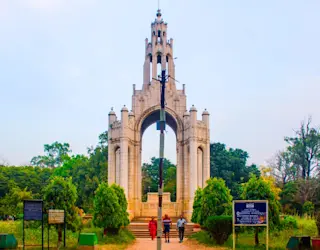
Nubra Valley to Prayagraj taxi | ||
| Honda WRV Petrol MT Sunroof | ₹4500/day | Book Now |
| Alto 800 Petrol | ₹1800/day | Book Now |
| Tata Tiago MT Diesel | ₹1800/day | Book Now |
| Hyundai Aura MT Diesel | ₹2000/day | Book Now |
| Maruti Celerio AT Petrol | ₹2000/day | Book Now |
| Maruti Swift MT Petrol | ₹12/Km | Book Now |
| Hyundai Creata MT Diesel | ₹4000/day | Book Now |
| Hyundai I10 grand MT Petrol | ₹2000/day | Book Now |
| Hyundai i20 MT Diesel: | ₹3200/day | Book Now |
| Mahindra XUV 300, Sunroof MT | ₹4200/day | Book Now |
| Hyundai I10 grant MT Petrol | ₹2200/day | Book Now |
| Maruti S-Cross | ₹3500/day | Book Now |
| Maruti Breeza MT/AT Diesel | ₹3800/day | Book Now |
| Honda Amaze MT Diesel | ₹3200/day | Book Now |
| Maruti Dzire MT Diesel | ₹3000/day | Book Now |
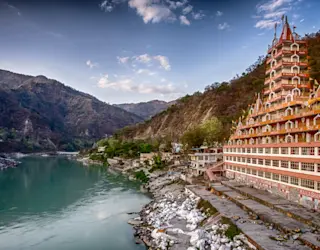
Nubra Valley to Rishikesh taxi | ||
| Honda WRV Petrol MT Sunroof | ₹4500/day | Book Now |
| Alto 800 Petrol | ₹1800/day | Book Now |
| Tata Tiago MT Diesel | ₹1800/day | Book Now |
| Hyundai Aura MT Diesel | ₹2000/day | Book Now |
| Maruti Celerio AT Petrol | ₹2000/day | Book Now |
| Maruti Swift MT Petrol | ₹12/Km | Book Now |
| Hyundai Creata MT Diesel | ₹4000/day | Book Now |
| Hyundai I10 grand MT Petrol | ₹2000/day | Book Now |
| Hyundai i20 MT Diesel: | ₹3200/day | Book Now |
| Mahindra XUV 300, Sunroof MT | ₹4200/day | Book Now |
| Hyundai I10 grant MT Petrol | ₹2200/day | Book Now |
| Maruti S-Cross | ₹3500/day | Book Now |
| Maruti Breeza MT/AT Diesel | ₹3800/day | Book Now |
| Honda Amaze MT Diesel | ₹3200/day | Book Now |
| Maruti Dzire MT Diesel | ₹3000/day | Book Now |

Nubra Valley to Nainital taxi | ||
| Honda WRV Petrol MT Sunroof | ₹4500/day | Book Now |
| Alto 800 Petrol | ₹1800/day | Book Now |
| Tata Tiago MT Diesel | ₹1800/day | Book Now |
| Hyundai Aura MT Diesel | ₹2000/day | Book Now |
| Maruti Celerio AT Petrol | ₹2000/day | Book Now |
| Maruti Swift MT Petrol | ₹12/Km | Book Now |
| Hyundai Creata MT Diesel | ₹4000/day | Book Now |
| Hyundai I10 grand MT Petrol | ₹2000/day | Book Now |
| Hyundai i20 MT Diesel: | ₹3200/day | Book Now |
| Mahindra XUV 300, Sunroof MT | ₹4200/day | Book Now |
| Hyundai I10 grant MT Petrol | ₹2200/day | Book Now |
| Maruti S-Cross | ₹3500/day | Book Now |
| Maruti Breeza MT/AT Diesel | ₹3800/day | Book Now |
| Honda Amaze MT Diesel | ₹3200/day | Book Now |
| Maruti Dzire MT Diesel | ₹3000/day | Book Now |

Nubra Valley to Mussoorie taxi | ||
| Honda WRV Petrol MT Sunroof | ₹4500/day | Book Now |
| Alto 800 Petrol | ₹1800/day | Book Now |
| Tata Tiago MT Diesel | ₹1800/day | Book Now |
| Hyundai Aura MT Diesel | ₹2000/day | Book Now |
| Maruti Celerio AT Petrol | ₹2000/day | Book Now |
| Maruti Swift MT Petrol | ₹12/Km | Book Now |
| Hyundai Creata MT Diesel | ₹4000/day | Book Now |
| Hyundai I10 grand MT Petrol | ₹2000/day | Book Now |
| Hyundai i20 MT Diesel: | ₹3200/day | Book Now |
| Mahindra XUV 300, Sunroof MT | ₹4200/day | Book Now |
| Hyundai I10 grant MT Petrol | ₹2200/day | Book Now |
| Maruti S-Cross | ₹3500/day | Book Now |
| Maruti Breeza MT/AT Diesel | ₹3800/day | Book Now |
| Honda Amaze MT Diesel | ₹3200/day | Book Now |
| Maruti Dzire MT Diesel | ₹3000/day | Book Now |

Nubra Valley to Dharamshala taxi | ||
| Honda WRV Petrol MT Sunroof | ₹4500/day | Book Now |
| Alto 800 Petrol | ₹1800/day | Book Now |
| Tata Tiago MT Diesel | ₹1800/day | Book Now |
| Hyundai Aura MT Diesel | ₹2000/day | Book Now |
| Maruti Celerio AT Petrol | ₹2000/day | Book Now |
| Maruti Swift MT Petrol | ₹12/Km | Book Now |
| Hyundai Creata MT Diesel | ₹4000/day | Book Now |
| Hyundai I10 grand MT Petrol | ₹2000/day | Book Now |
| Hyundai i20 MT Diesel: | ₹3200/day | Book Now |
| Mahindra XUV 300, Sunroof MT | ₹4200/day | Book Now |
| Hyundai I10 grant MT Petrol | ₹2200/day | Book Now |
| Maruti S-Cross | ₹3500/day | Book Now |
| Maruti Breeza MT/AT Diesel | ₹3800/day | Book Now |
| Honda Amaze MT Diesel | ₹3200/day | Book Now |
| Maruti Dzire MT Diesel | ₹3000/day | Book Now |

Nubra Valley to Uttarkashi taxi | ||
| Honda WRV Petrol MT Sunroof | ₹4500/day | Book Now |
| Alto 800 Petrol | ₹1800/day | Book Now |
| Tata Tiago MT Diesel | ₹1800/day | Book Now |
| Hyundai Aura MT Diesel | ₹2000/day | Book Now |
| Maruti Celerio AT Petrol | ₹2000/day | Book Now |
| Maruti Swift MT Petrol | ₹12/Km | Book Now |
| Hyundai Creata MT Diesel | ₹4000/day | Book Now |
| Hyundai I10 grand MT Petrol | ₹2000/day | Book Now |
| Hyundai i20 MT Diesel: | ₹3200/day | Book Now |
| Mahindra XUV 300, Sunroof MT | ₹4200/day | Book Now |
| Hyundai I10 grant MT Petrol | ₹2200/day | Book Now |
| Maruti S-Cross | ₹3500/day | Book Now |
| Maruti Breeza MT/AT Diesel | ₹3800/day | Book Now |
| Honda Amaze MT Diesel | ₹3200/day | Book Now |
| Maruti Dzire MT Diesel | ₹3000/day | Book Now |
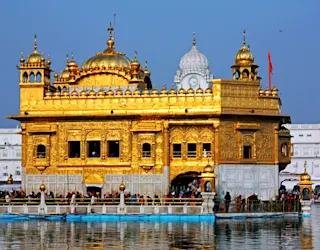
Nubra Valley to Amritsar taxi | ||
| Honda WRV Petrol MT Sunroof | ₹4500/day | Book Now |
| Alto 800 Petrol | ₹1800/day | Book Now |
| Tata Tiago MT Diesel | ₹1800/day | Book Now |
| Hyundai Aura MT Diesel | ₹2000/day | Book Now |
| Maruti Celerio AT Petrol | ₹2000/day | Book Now |
| Maruti Swift MT Petrol | ₹12/Km | Book Now |
| Hyundai Creata MT Diesel | ₹4000/day | Book Now |
| Hyundai I10 grand MT Petrol | ₹2000/day | Book Now |
| Hyundai i20 MT Diesel: | ₹3200/day | Book Now |
| Mahindra XUV 300, Sunroof MT | ₹4200/day | Book Now |
| Hyundai I10 grant MT Petrol | ₹2200/day | Book Now |
| Maruti S-Cross | ₹3500/day | Book Now |
| Maruti Breeza MT/AT Diesel | ₹3800/day | Book Now |
| Honda Amaze MT Diesel | ₹3200/day | Book Now |
| Maruti Dzire MT Diesel | ₹3000/day | Book Now |

Nubra Valley to Dehradun taxi | ||
| Honda WRV Petrol MT Sunroof | ₹4500/day | Book Now |
| Alto 800 Petrol | ₹1800/day | Book Now |
| Tata Tiago MT Diesel | ₹1800/day | Book Now |
| Hyundai Aura MT Diesel | ₹2000/day | Book Now |
| Maruti Celerio AT Petrol | ₹2000/day | Book Now |
| Maruti Swift MT Petrol | ₹12/Km | Book Now |
| Hyundai Creata MT Diesel | ₹4000/day | Book Now |
| Hyundai I10 grand MT Petrol | ₹2000/day | Book Now |
| Hyundai i20 MT Diesel: | ₹3200/day | Book Now |
| Mahindra XUV 300, Sunroof MT | ₹4200/day | Book Now |
| Hyundai I10 grant MT Petrol | ₹2200/day | Book Now |
| Maruti S-Cross | ₹3500/day | Book Now |
| Maruti Breeza MT/AT Diesel | ₹3800/day | Book Now |
| Honda Amaze MT Diesel | ₹3200/day | Book Now |
| Maruti Dzire MT Diesel | ₹3000/day | Book Now |

Nubra Valley to Lansdowne taxi | ||
| Honda WRV Petrol MT Sunroof | ₹4500/day | Book Now |
| Alto 800 Petrol | ₹1800/day | Book Now |
| Tata Tiago MT Diesel | ₹1800/day | Book Now |
| Hyundai Aura MT Diesel | ₹2000/day | Book Now |
| Maruti Celerio AT Petrol | ₹2000/day | Book Now |
| Maruti Swift MT Petrol | ₹12/Km | Book Now |
| Hyundai Creata MT Diesel | ₹4000/day | Book Now |
| Hyundai I10 grand MT Petrol | ₹2000/day | Book Now |
| Hyundai i20 MT Diesel: | ₹3200/day | Book Now |
| Mahindra XUV 300, Sunroof MT | ₹4200/day | Book Now |
| Hyundai I10 grant MT Petrol | ₹2200/day | Book Now |
| Maruti S-Cross | ₹3500/day | Book Now |
| Maruti Breeza MT/AT Diesel | ₹3800/day | Book Now |
| Honda Amaze MT Diesel | ₹3200/day | Book Now |
| Maruti Dzire MT Diesel | ₹3000/day | Book Now |
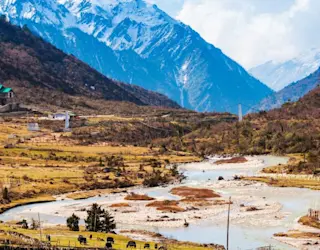
Nubra Valley to Chopta taxi | ||
| Honda WRV Petrol MT Sunroof | ₹4500/day | Book Now |
| Alto 800 Petrol | ₹1800/day | Book Now |
| Tata Tiago MT Diesel | ₹1800/day | Book Now |
| Hyundai Aura MT Diesel | ₹2000/day | Book Now |
| Maruti Celerio AT Petrol | ₹2000/day | Book Now |
| Maruti Swift MT Petrol | ₹12/Km | Book Now |
| Hyundai Creata MT Diesel | ₹4000/day | Book Now |
| Hyundai I10 grand MT Petrol | ₹2000/day | Book Now |
| Hyundai i20 MT Diesel: | ₹3200/day | Book Now |
| Mahindra XUV 300, Sunroof MT | ₹4200/day | Book Now |
| Hyundai I10 grant MT Petrol | ₹2200/day | Book Now |
| Maruti S-Cross | ₹3500/day | Book Now |
| Maruti Breeza MT/AT Diesel | ₹3800/day | Book Now |
| Honda Amaze MT Diesel | ₹3200/day | Book Now |
| Maruti Dzire MT Diesel | ₹3000/day | Book Now |
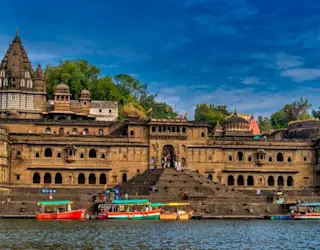
Nubra Valley to Varanasi taxi | ||
| Honda WRV Petrol MT Sunroof | ₹4500/day | Book Now |
| Alto 800 Petrol | ₹1800/day | Book Now |
| Tata Tiago MT Diesel | ₹1800/day | Book Now |
| Hyundai Aura MT Diesel | ₹2000/day | Book Now |
| Maruti Celerio AT Petrol | ₹2000/day | Book Now |
| Maruti Swift MT Petrol | ₹12/Km | Book Now |
| Hyundai Creata MT Diesel | ₹4000/day | Book Now |
| Hyundai I10 grand MT Petrol | ₹2000/day | Book Now |
| Hyundai i20 MT Diesel: | ₹3200/day | Book Now |
| Mahindra XUV 300, Sunroof MT | ₹4200/day | Book Now |
| Hyundai I10 grant MT Petrol | ₹2200/day | Book Now |
| Maruti S-Cross | ₹3500/day | Book Now |
| Maruti Breeza MT/AT Diesel | ₹3800/day | Book Now |
| Honda Amaze MT Diesel | ₹3200/day | Book Now |
| Maruti Dzire MT Diesel | ₹3000/day | Book Now |

Nubra Valley to Lucknow taxi | ||
| Honda WRV Petrol MT Sunroof | ₹4500/day | Book Now |
| Alto 800 Petrol | ₹1800/day | Book Now |
| Tata Tiago MT Diesel | ₹1800/day | Book Now |
| Hyundai Aura MT Diesel | ₹2000/day | Book Now |
| Maruti Celerio AT Petrol | ₹2000/day | Book Now |
| Maruti Swift MT Petrol | ₹12/Km | Book Now |
| Hyundai Creata MT Diesel | ₹4000/day | Book Now |
| Hyundai I10 grand MT Petrol | ₹2000/day | Book Now |
| Hyundai i20 MT Diesel: | ₹3200/day | Book Now |
| Mahindra XUV 300, Sunroof MT | ₹4200/day | Book Now |
| Hyundai I10 grant MT Petrol | ₹2200/day | Book Now |
| Maruti S-Cross | ₹3500/day | Book Now |
| Maruti Breeza MT/AT Diesel | ₹3800/day | Book Now |
| Honda Amaze MT Diesel | ₹3200/day | Book Now |
| Maruti Dzire MT Diesel | ₹3000/day | Book Now |
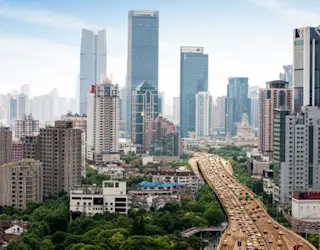
Nubra Valley to Noida taxi | ||
| Honda WRV Petrol MT Sunroof | ₹4500/day | Book Now |
| Alto 800 Petrol | ₹1800/day | Book Now |
| Tata Tiago MT Diesel | ₹1800/day | Book Now |
| Hyundai Aura MT Diesel | ₹2000/day | Book Now |
| Maruti Celerio AT Petrol | ₹2000/day | Book Now |
| Maruti Swift MT Petrol | ₹12/Km | Book Now |
| Hyundai Creata MT Diesel | ₹4000/day | Book Now |
| Hyundai I10 grand MT Petrol | ₹2000/day | Book Now |
| Hyundai i20 MT Diesel: | ₹3200/day | Book Now |
| Mahindra XUV 300, Sunroof MT | ₹4200/day | Book Now |
| Hyundai I10 grant MT Petrol | ₹2200/day | Book Now |
| Maruti S-Cross | ₹3500/day | Book Now |
| Maruti Breeza MT/AT Diesel | ₹3800/day | Book Now |
| Honda Amaze MT Diesel | ₹3200/day | Book Now |
| Maruti Dzire MT Diesel | ₹3000/day | Book Now |

Nubra Valley to Mathura taxi | ||
| Honda WRV Petrol MT Sunroof | ₹4500/day | Book Now |
| Alto 800 Petrol | ₹1800/day | Book Now |
| Tata Tiago MT Diesel | ₹1800/day | Book Now |
| Hyundai Aura MT Diesel | ₹2000/day | Book Now |
| Maruti Celerio AT Petrol | ₹2000/day | Book Now |
| Maruti Swift MT Petrol | ₹12/Km | Book Now |
| Hyundai Creata MT Diesel | ₹4000/day | Book Now |
| Hyundai I10 grand MT Petrol | ₹2000/day | Book Now |
| Hyundai i20 MT Diesel: | ₹3200/day | Book Now |
| Mahindra XUV 300, Sunroof MT | ₹4200/day | Book Now |
| Hyundai I10 grant MT Petrol | ₹2200/day | Book Now |
| Maruti S-Cross | ₹3500/day | Book Now |
| Maruti Breeza MT/AT Diesel | ₹3800/day | Book Now |
| Honda Amaze MT Diesel | ₹3200/day | Book Now |
| Maruti Dzire MT Diesel | ₹3000/day | Book Now |

Nubra Valley to Akhnoor taxi | ||
| Honda WRV Petrol MT Sunroof | ₹4500/day | Book Now |
| Alto 800 Petrol | ₹1800/day | Book Now |
| Tata Tiago MT Diesel | ₹1800/day | Book Now |
| Hyundai Aura MT Diesel | ₹2000/day | Book Now |
| Maruti Celerio AT Petrol | ₹2000/day | Book Now |
| Maruti Swift MT Petrol | ₹12/Km | Book Now |
| Hyundai Creata MT Diesel | ₹4000/day | Book Now |
| Hyundai I10 grand MT Petrol | ₹2000/day | Book Now |
| Hyundai i20 MT Diesel: | ₹3200/day | Book Now |
| Mahindra XUV 300, Sunroof MT | ₹4200/day | Book Now |
| Hyundai I10 grant MT Petrol | ₹2200/day | Book Now |
| Maruti S-Cross | ₹3500/day | Book Now |
| Maruti Breeza MT/AT Diesel | ₹3800/day | Book Now |
| Honda Amaze MT Diesel | ₹3200/day | Book Now |
| Maruti Dzire MT Diesel | ₹3000/day | Book Now |

Nubra Valley to Gulmarg taxi | ||
| Honda WRV Petrol MT Sunroof | ₹4500/day | Book Now |
| Alto 800 Petrol | ₹1800/day | Book Now |
| Tata Tiago MT Diesel | ₹1800/day | Book Now |
| Hyundai Aura MT Diesel | ₹2000/day | Book Now |
| Maruti Celerio AT Petrol | ₹2000/day | Book Now |
| Maruti Swift MT Petrol | ₹12/Km | Book Now |
| Hyundai Creata MT Diesel | ₹4000/day | Book Now |
| Hyundai I10 grand MT Petrol | ₹2000/day | Book Now |
| Hyundai i20 MT Diesel: | ₹3200/day | Book Now |
| Mahindra XUV 300, Sunroof MT | ₹4200/day | Book Now |
| Hyundai I10 grant MT Petrol | ₹2200/day | Book Now |
| Maruti S-Cross | ₹3500/day | Book Now |
| Maruti Breeza MT/AT Diesel | ₹3800/day | Book Now |
| Honda Amaze MT Diesel | ₹3200/day | Book Now |
| Maruti Dzire MT Diesel | ₹3000/day | Book Now |

Nubra Valley to Kishtwar taxi | ||
| Honda WRV Petrol MT Sunroof | ₹4500/day | Book Now |
| Alto 800 Petrol | ₹1800/day | Book Now |
| Tata Tiago MT Diesel | ₹1800/day | Book Now |
| Hyundai Aura MT Diesel | ₹2000/day | Book Now |
| Maruti Celerio AT Petrol | ₹2000/day | Book Now |
| Maruti Swift MT Petrol | ₹12/Km | Book Now |
| Hyundai Creata MT Diesel | ₹4000/day | Book Now |
| Hyundai I10 grand MT Petrol | ₹2000/day | Book Now |
| Hyundai i20 MT Diesel: | ₹3200/day | Book Now |
| Mahindra XUV 300, Sunroof MT | ₹4200/day | Book Now |
| Hyundai I10 grant MT Petrol | ₹2200/day | Book Now |
| Maruti S-Cross | ₹3500/day | Book Now |
| Maruti Breeza MT/AT Diesel | ₹3800/day | Book Now |
| Honda Amaze MT Diesel | ₹3200/day | Book Now |
| Maruti Dzire MT Diesel | ₹3000/day | Book Now |

Nubra Valley to Pahalgam taxi | ||
| Honda WRV Petrol MT Sunroof | ₹4500/day | Book Now |
| Alto 800 Petrol | ₹1800/day | Book Now |
| Tata Tiago MT Diesel | ₹1800/day | Book Now |
| Hyundai Aura MT Diesel | ₹2000/day | Book Now |
| Maruti Celerio AT Petrol | ₹2000/day | Book Now |
| Maruti Swift MT Petrol | ₹12/Km | Book Now |
| Hyundai Creata MT Diesel | ₹4000/day | Book Now |
| Hyundai I10 grand MT Petrol | ₹2000/day | Book Now |
| Hyundai i20 MT Diesel: | ₹3200/day | Book Now |
| Mahindra XUV 300, Sunroof MT | ₹4200/day | Book Now |
| Hyundai I10 grant MT Petrol | ₹2200/day | Book Now |
| Maruti S-Cross | ₹3500/day | Book Now |
| Maruti Breeza MT/AT Diesel | ₹3800/day | Book Now |
| Honda Amaze MT Diesel | ₹3200/day | Book Now |
| Maruti Dzire MT Diesel | ₹3000/day | Book Now |
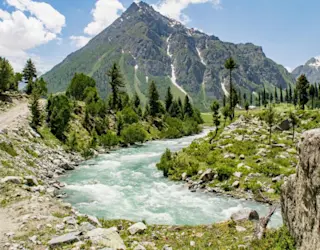
Nubra Valley to Srinagar taxi | ||
| Honda WRV Petrol MT Sunroof | ₹4500/day | Book Now |
| Alto 800 Petrol | ₹1800/day | Book Now |
| Tata Tiago MT Diesel | ₹1800/day | Book Now |
| Hyundai Aura MT Diesel | ₹2000/day | Book Now |
| Maruti Celerio AT Petrol | ₹2000/day | Book Now |
| Maruti Swift MT Petrol | ₹12/Km | Book Now |
| Hyundai Creata MT Diesel | ₹4000/day | Book Now |
| Hyundai I10 grand MT Petrol | ₹2000/day | Book Now |
| Hyundai i20 MT Diesel: | ₹3200/day | Book Now |
| Mahindra XUV 300, Sunroof MT | ₹4200/day | Book Now |
| Hyundai I10 grant MT Petrol | ₹2200/day | Book Now |
| Maruti S-Cross | ₹3500/day | Book Now |
| Maruti Breeza MT/AT Diesel | ₹3800/day | Book Now |
| Honda Amaze MT Diesel | ₹3200/day | Book Now |
| Maruti Dzire MT Diesel | ₹3000/day | Book Now |
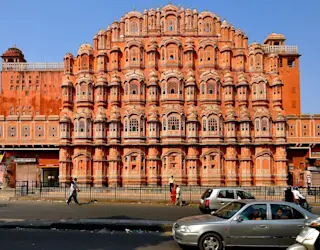
Nubra Valley to North India taxi | ||
| Honda WRV Petrol MT Sunroof | ₹4500/day | Book Now |
| Alto 800 Petrol | ₹1800/day | Book Now |
| Tata Tiago MT Diesel | ₹1800/day | Book Now |
| Hyundai Aura MT Diesel | ₹2000/day | Book Now |
| Maruti Celerio AT Petrol | ₹2000/day | Book Now |
| Maruti Swift MT Petrol | ₹12/Km | Book Now |
| Hyundai Creata MT Diesel | ₹4000/day | Book Now |
| Hyundai I10 grand MT Petrol | ₹2000/day | Book Now |
| Hyundai i20 MT Diesel: | ₹3200/day | Book Now |
| Mahindra XUV 300, Sunroof MT | ₹4200/day | Book Now |
| Hyundai I10 grant MT Petrol | ₹2200/day | Book Now |
| Maruti S-Cross | ₹3500/day | Book Now |
| Maruti Breeza MT/AT Diesel | ₹3800/day | Book Now |
| Honda Amaze MT Diesel | ₹3200/day | Book Now |
| Maruti Dzire MT Diesel | ₹3000/day | Book Now |

Nubra Valley to Gwalior taxi | ||
| Honda WRV Petrol MT Sunroof | ₹4500/day | Book Now |
| Alto 800 Petrol | ₹1800/day | Book Now |
| Tata Tiago MT Diesel | ₹1800/day | Book Now |
| Hyundai Aura MT Diesel | ₹2000/day | Book Now |
| Maruti Celerio AT Petrol | ₹2000/day | Book Now |
| Maruti Swift MT Petrol | ₹12/Km | Book Now |
| Hyundai Creata MT Diesel | ₹4000/day | Book Now |
| Hyundai I10 grand MT Petrol | ₹2000/day | Book Now |
| Hyundai i20 MT Diesel: | ₹3200/day | Book Now |
| Mahindra XUV 300, Sunroof MT | ₹4200/day | Book Now |
| Hyundai I10 grant MT Petrol | ₹2200/day | Book Now |
| Maruti S-Cross | ₹3500/day | Book Now |
| Maruti Breeza MT/AT Diesel | ₹3800/day | Book Now |
| Honda Amaze MT Diesel | ₹3200/day | Book Now |
| Maruti Dzire MT Diesel | ₹3000/day | Book Now |

Nubra Valley to Connaught Place taxi | ||
| Honda WRV Petrol MT Sunroof | ₹4500/day | Book Now |
| Alto 800 Petrol | ₹1800/day | Book Now |
| Tata Tiago MT Diesel | ₹1800/day | Book Now |
| Hyundai Aura MT Diesel | ₹2000/day | Book Now |
| Maruti Celerio AT Petrol | ₹2000/day | Book Now |
| Maruti Swift MT Petrol | ₹12/Km | Book Now |
| Hyundai Creata MT Diesel | ₹4000/day | Book Now |
| Hyundai I10 grand MT Petrol | ₹2000/day | Book Now |
| Hyundai i20 MT Diesel: | ₹3200/day | Book Now |
| Mahindra XUV 300, Sunroof MT | ₹4200/day | Book Now |
| Hyundai I10 grant MT Petrol | ₹2200/day | Book Now |
| Maruti S-Cross | ₹3500/day | Book Now |
| Maruti Breeza MT/AT Diesel | ₹3800/day | Book Now |
| Honda Amaze MT Diesel | ₹3200/day | Book Now |
| Maruti Dzire MT Diesel | ₹3000/day | Book Now |

Nubra Valley to Dwarka taxi | ||
| Honda WRV Petrol MT Sunroof | ₹4500/day | Book Now |
| Alto 800 Petrol | ₹1800/day | Book Now |
| Tata Tiago MT Diesel | ₹1800/day | Book Now |
| Hyundai Aura MT Diesel | ₹2000/day | Book Now |
| Maruti Celerio AT Petrol | ₹2000/day | Book Now |
| Maruti Swift MT Petrol | ₹12/Km | Book Now |
| Hyundai Creata MT Diesel | ₹4000/day | Book Now |
| Hyundai I10 grand MT Petrol | ₹2000/day | Book Now |
| Hyundai i20 MT Diesel: | ₹3200/day | Book Now |
| Mahindra XUV 300, Sunroof MT | ₹4200/day | Book Now |
| Hyundai I10 grant MT Petrol | ₹2200/day | Book Now |
| Maruti S-Cross | ₹3500/day | Book Now |
| Maruti Breeza MT/AT Diesel | ₹3800/day | Book Now |
| Honda Amaze MT Diesel | ₹3200/day | Book Now |
| Maruti Dzire MT Diesel | ₹3000/day | Book Now |
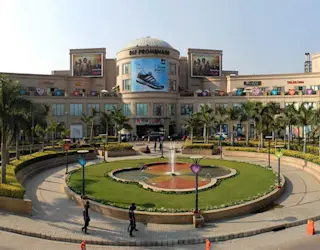
Nubra Valley to Vasant Kunj taxi | ||
| Honda WRV Petrol MT Sunroof | ₹4500/day | Book Now |
| Alto 800 Petrol | ₹1800/day | Book Now |
| Tata Tiago MT Diesel | ₹1800/day | Book Now |
| Hyundai Aura MT Diesel | ₹2000/day | Book Now |
| Maruti Celerio AT Petrol | ₹2000/day | Book Now |
| Maruti Swift MT Petrol | ₹12/Km | Book Now |
| Hyundai Creata MT Diesel | ₹4000/day | Book Now |
| Hyundai I10 grand MT Petrol | ₹2000/day | Book Now |
| Hyundai i20 MT Diesel: | ₹3200/day | Book Now |
| Mahindra XUV 300, Sunroof MT | ₹4200/day | Book Now |
| Hyundai I10 grant MT Petrol | ₹2200/day | Book Now |
| Maruti S-Cross | ₹3500/day | Book Now |
| Maruti Breeza MT/AT Diesel | ₹3800/day | Book Now |
| Honda Amaze MT Diesel | ₹3200/day | Book Now |
| Maruti Dzire MT Diesel | ₹3000/day | Book Now |
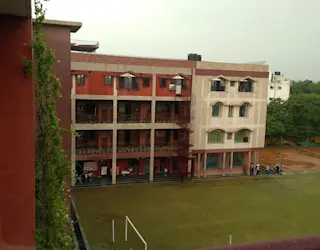
Nubra Valley to Greater Kailash taxi | ||
| Honda WRV Petrol MT Sunroof | ₹4500/day | Book Now |
| Alto 800 Petrol | ₹1800/day | Book Now |
| Tata Tiago MT Diesel | ₹1800/day | Book Now |
| Hyundai Aura MT Diesel | ₹2000/day | Book Now |
| Maruti Celerio AT Petrol | ₹2000/day | Book Now |
| Maruti Swift MT Petrol | ₹12/Km | Book Now |
| Hyundai Creata MT Diesel | ₹4000/day | Book Now |
| Hyundai I10 grand MT Petrol | ₹2000/day | Book Now |
| Hyundai i20 MT Diesel: | ₹3200/day | Book Now |
| Mahindra XUV 300, Sunroof MT | ₹4200/day | Book Now |
| Hyundai I10 grant MT Petrol | ₹2200/day | Book Now |
| Maruti S-Cross | ₹3500/day | Book Now |
| Maruti Breeza MT/AT Diesel | ₹3800/day | Book Now |
| Honda Amaze MT Diesel | ₹3200/day | Book Now |
| Maruti Dzire MT Diesel | ₹3000/day | Book Now |

Nubra Valley to Dalhousie taxi | ||
| Honda WRV Petrol MT Sunroof | ₹4500/day | Book Now |
| Alto 800 Petrol | ₹1800/day | Book Now |
| Tata Tiago MT Diesel | ₹1800/day | Book Now |
| Hyundai Aura MT Diesel | ₹2000/day | Book Now |
| Maruti Celerio AT Petrol | ₹2000/day | Book Now |
| Maruti Swift MT Petrol | ₹12/Km | Book Now |
| Hyundai Creata MT Diesel | ₹4000/day | Book Now |
| Hyundai I10 grand MT Petrol | ₹2000/day | Book Now |
| Hyundai i20 MT Diesel: | ₹3200/day | Book Now |
| Mahindra XUV 300, Sunroof MT | ₹4200/day | Book Now |
| Hyundai I10 grant MT Petrol | ₹2200/day | Book Now |
| Maruti S-Cross | ₹3500/day | Book Now |
| Maruti Breeza MT/AT Diesel | ₹3800/day | Book Now |
| Honda Amaze MT Diesel | ₹3200/day | Book Now |
| Maruti Dzire MT Diesel | ₹3000/day | Book Now |
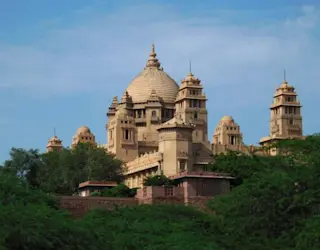
Nubra Valley to Karol Bagh taxi | ||
| Honda WRV Petrol MT Sunroof | ₹4500/day | Book Now |
| Alto 800 Petrol | ₹1800/day | Book Now |
| Tata Tiago MT Diesel | ₹1800/day | Book Now |
| Hyundai Aura MT Diesel | ₹2000/day | Book Now |
| Maruti Celerio AT Petrol | ₹2000/day | Book Now |
| Maruti Swift MT Petrol | ₹12/Km | Book Now |
| Hyundai Creata MT Diesel | ₹4000/day | Book Now |
| Hyundai I10 grand MT Petrol | ₹2000/day | Book Now |
| Hyundai i20 MT Diesel: | ₹3200/day | Book Now |
| Mahindra XUV 300, Sunroof MT | ₹4200/day | Book Now |
| Hyundai I10 grant MT Petrol | ₹2200/day | Book Now |
| Maruti S-Cross | ₹3500/day | Book Now |
| Maruti Breeza MT/AT Diesel | ₹3800/day | Book Now |
| Honda Amaze MT Diesel | ₹3200/day | Book Now |
| Maruti Dzire MT Diesel | ₹3000/day | Book Now |

Nubra Valley to Ramgarh taxi | ||
| Honda WRV Petrol MT Sunroof | ₹4500/day | Book Now |
| Alto 800 Petrol | ₹1800/day | Book Now |
| Tata Tiago MT Diesel | ₹1800/day | Book Now |
| Hyundai Aura MT Diesel | ₹2000/day | Book Now |
| Maruti Celerio AT Petrol | ₹2000/day | Book Now |
| Maruti Swift MT Petrol | ₹12/Km | Book Now |
| Hyundai Creata MT Diesel | ₹4000/day | Book Now |
| Hyundai I10 grand MT Petrol | ₹2000/day | Book Now |
| Hyundai i20 MT Diesel: | ₹3200/day | Book Now |
| Mahindra XUV 300, Sunroof MT | ₹4200/day | Book Now |
| Hyundai I10 grant MT Petrol | ₹2200/day | Book Now |
| Maruti S-Cross | ₹3500/day | Book Now |
| Maruti Breeza MT/AT Diesel | ₹3800/day | Book Now |
| Honda Amaze MT Diesel | ₹3200/day | Book Now |
| Maruti Dzire MT Diesel | ₹3000/day | Book Now |

Nubra Valley to Kukas taxi | ||
| Honda WRV Petrol MT Sunroof | ₹4500/day | Book Now |
| Alto 800 Petrol | ₹1800/day | Book Now |
| Tata Tiago MT Diesel | ₹1800/day | Book Now |
| Hyundai Aura MT Diesel | ₹2000/day | Book Now |
| Maruti Celerio AT Petrol | ₹2000/day | Book Now |
| Maruti Swift MT Petrol | ₹12/Km | Book Now |
| Hyundai Creata MT Diesel | ₹4000/day | Book Now |
| Hyundai I10 grand MT Petrol | ₹2000/day | Book Now |
| Hyundai i20 MT Diesel: | ₹3200/day | Book Now |
| Mahindra XUV 300, Sunroof MT | ₹4200/day | Book Now |
| Hyundai I10 grant MT Petrol | ₹2200/day | Book Now |
| Maruti S-Cross | ₹3500/day | Book Now |
| Maruti Breeza MT/AT Diesel | ₹3800/day | Book Now |
| Honda Amaze MT Diesel | ₹3200/day | Book Now |
| Maruti Dzire MT Diesel | ₹3000/day | Book Now |
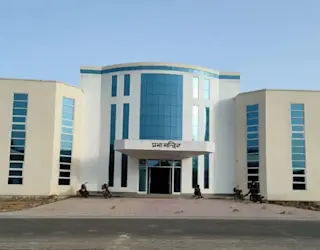
Nubra Valley to Banasthali taxi | ||
| Honda WRV Petrol MT Sunroof | ₹4500/day | Book Now |
| Alto 800 Petrol | ₹1800/day | Book Now |
| Tata Tiago MT Diesel | ₹1800/day | Book Now |
| Hyundai Aura MT Diesel | ₹2000/day | Book Now |
| Maruti Celerio AT Petrol | ₹2000/day | Book Now |
| Maruti Swift MT Petrol | ₹12/Km | Book Now |
| Hyundai Creata MT Diesel | ₹4000/day | Book Now |
| Hyundai I10 grand MT Petrol | ₹2000/day | Book Now |
| Hyundai i20 MT Diesel: | ₹3200/day | Book Now |
| Mahindra XUV 300, Sunroof MT | ₹4200/day | Book Now |
| Hyundai I10 grant MT Petrol | ₹2200/day | Book Now |
| Maruti S-Cross | ₹3500/day | Book Now |
| Maruti Breeza MT/AT Diesel | ₹3800/day | Book Now |
| Honda Amaze MT Diesel | ₹3200/day | Book Now |
| Maruti Dzire MT Diesel | ₹3000/day | Book Now |

Nubra Valley to Fatehpur Sikri taxi | ||
| Honda WRV Petrol MT Sunroof | ₹4500/day | Book Now |
| Alto 800 Petrol | ₹1800/day | Book Now |
| Tata Tiago MT Diesel | ₹1800/day | Book Now |
| Hyundai Aura MT Diesel | ₹2000/day | Book Now |
| Maruti Celerio AT Petrol | ₹2000/day | Book Now |
| Maruti Swift MT Petrol | ₹12/Km | Book Now |
| Hyundai Creata MT Diesel | ₹4000/day | Book Now |
| Hyundai I10 grand MT Petrol | ₹2000/day | Book Now |
| Hyundai i20 MT Diesel: | ₹3200/day | Book Now |
| Mahindra XUV 300, Sunroof MT | ₹4200/day | Book Now |
| Hyundai I10 grant MT Petrol | ₹2200/day | Book Now |
| Maruti S-Cross | ₹3500/day | Book Now |
| Maruti Breeza MT/AT Diesel | ₹3800/day | Book Now |
| Honda Amaze MT Diesel | ₹3200/day | Book Now |
| Maruti Dzire MT Diesel | ₹3000/day | Book Now |

Nubra Valley to Jhunjhunu taxi | ||
| Honda WRV Petrol MT Sunroof | ₹4500/day | Book Now |
| Alto 800 Petrol | ₹1800/day | Book Now |
| Tata Tiago MT Diesel | ₹1800/day | Book Now |
| Hyundai Aura MT Diesel | ₹2000/day | Book Now |
| Maruti Celerio AT Petrol | ₹2000/day | Book Now |
| Maruti Swift MT Petrol | ₹12/Km | Book Now |
| Hyundai Creata MT Diesel | ₹4000/day | Book Now |
| Hyundai I10 grand MT Petrol | ₹2000/day | Book Now |
| Hyundai i20 MT Diesel: | ₹3200/day | Book Now |
| Mahindra XUV 300, Sunroof MT | ₹4200/day | Book Now |
| Hyundai I10 grant MT Petrol | ₹2200/day | Book Now |
| Maruti S-Cross | ₹3500/day | Book Now |
| Maruti Breeza MT/AT Diesel | ₹3800/day | Book Now |
| Honda Amaze MT Diesel | ₹3200/day | Book Now |
| Maruti Dzire MT Diesel | ₹3000/day | Book Now |

Nubra Valley to Kotputli taxi | ||
| Honda WRV Petrol MT Sunroof | ₹4500/day | Book Now |
| Alto 800 Petrol | ₹1800/day | Book Now |
| Tata Tiago MT Diesel | ₹1800/day | Book Now |
| Hyundai Aura MT Diesel | ₹2000/day | Book Now |
| Maruti Celerio AT Petrol | ₹2000/day | Book Now |
| Maruti Swift MT Petrol | ₹12/Km | Book Now |
| Hyundai Creata MT Diesel | ₹4000/day | Book Now |
| Hyundai I10 grand MT Petrol | ₹2000/day | Book Now |
| Hyundai i20 MT Diesel: | ₹3200/day | Book Now |
| Mahindra XUV 300, Sunroof MT | ₹4200/day | Book Now |
| Hyundai I10 grant MT Petrol | ₹2200/day | Book Now |
| Maruti S-Cross | ₹3500/day | Book Now |
| Maruti Breeza MT/AT Diesel | ₹3800/day | Book Now |
| Honda Amaze MT Diesel | ₹3200/day | Book Now |
| Maruti Dzire MT Diesel | ₹3000/day | Book Now |

Nubra Valley to Sujangarh taxi | ||
| Honda WRV Petrol MT Sunroof | ₹4500/day | Book Now |
| Alto 800 Petrol | ₹1800/day | Book Now |
| Tata Tiago MT Diesel | ₹1800/day | Book Now |
| Hyundai Aura MT Diesel | ₹2000/day | Book Now |
| Maruti Celerio AT Petrol | ₹2000/day | Book Now |
| Maruti Swift MT Petrol | ₹12/Km | Book Now |
| Hyundai Creata MT Diesel | ₹4000/day | Book Now |
| Hyundai I10 grand MT Petrol | ₹2000/day | Book Now |
| Hyundai i20 MT Diesel: | ₹3200/day | Book Now |
| Mahindra XUV 300, Sunroof MT | ₹4200/day | Book Now |
| Hyundai I10 grant MT Petrol | ₹2200/day | Book Now |
| Maruti S-Cross | ₹3500/day | Book Now |
| Maruti Breeza MT/AT Diesel | ₹3800/day | Book Now |
| Honda Amaze MT Diesel | ₹3200/day | Book Now |
| Maruti Dzire MT Diesel | ₹3000/day | Book Now |
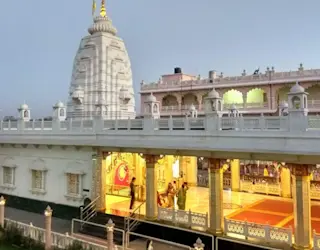
Nubra Valley to Rani Sati Dadi taxi | ||
| Honda WRV Petrol MT Sunroof | ₹4500/day | Book Now |
| Alto 800 Petrol | ₹1800/day | Book Now |
| Tata Tiago MT Diesel | ₹1800/day | Book Now |
| Hyundai Aura MT Diesel | ₹2000/day | Book Now |
| Maruti Celerio AT Petrol | ₹2000/day | Book Now |
| Maruti Swift MT Petrol | ₹12/Km | Book Now |
| Hyundai Creata MT Diesel | ₹4000/day | Book Now |
| Hyundai I10 grand MT Petrol | ₹2000/day | Book Now |
| Hyundai i20 MT Diesel: | ₹3200/day | Book Now |
| Mahindra XUV 300, Sunroof MT | ₹4200/day | Book Now |
| Hyundai I10 grant MT Petrol | ₹2200/day | Book Now |
| Maruti S-Cross | ₹3500/day | Book Now |
| Maruti Breeza MT/AT Diesel | ₹3800/day | Book Now |
| Honda Amaze MT Diesel | ₹3200/day | Book Now |
| Maruti Dzire MT Diesel | ₹3000/day | Book Now |
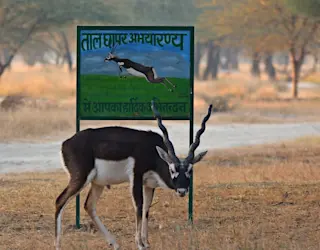
Nubra Valley to Chhapar Sanctuary taxi | ||
| Honda WRV Petrol MT Sunroof | ₹4500/day | Book Now |
| Alto 800 Petrol | ₹1800/day | Book Now |
| Tata Tiago MT Diesel | ₹1800/day | Book Now |
| Hyundai Aura MT Diesel | ₹2000/day | Book Now |
| Maruti Celerio AT Petrol | ₹2000/day | Book Now |
| Maruti Swift MT Petrol | ₹12/Km | Book Now |
| Hyundai Creata MT Diesel | ₹4000/day | Book Now |
| Hyundai I10 grand MT Petrol | ₹2000/day | Book Now |
| Hyundai i20 MT Diesel: | ₹3200/day | Book Now |
| Mahindra XUV 300, Sunroof MT | ₹4200/day | Book Now |
| Hyundai I10 grant MT Petrol | ₹2200/day | Book Now |
| Maruti S-Cross | ₹3500/day | Book Now |
| Maruti Breeza MT/AT Diesel | ₹3800/day | Book Now |
| Honda Amaze MT Diesel | ₹3200/day | Book Now |
| Maruti Dzire MT Diesel | ₹3000/day | Book Now |
Nubra Valley to Shri Mahavirji taxi | ||
| Honda WRV Petrol MT Sunroof | ₹4500/day | Book Now |
| Alto 800 Petrol | ₹1800/day | Book Now |
| Tata Tiago MT Diesel | ₹1800/day | Book Now |
| Hyundai Aura MT Diesel | ₹2000/day | Book Now |
| Maruti Celerio AT Petrol | ₹2000/day | Book Now |
| Maruti Swift MT Petrol | ₹12/Km | Book Now |
| Hyundai Creata MT Diesel | ₹4000/day | Book Now |
| Hyundai I10 grand MT Petrol | ₹2000/day | Book Now |
| Hyundai i20 MT Diesel: | ₹3200/day | Book Now |
| Mahindra XUV 300, Sunroof MT | ₹4200/day | Book Now |
| Hyundai I10 grant MT Petrol | ₹2200/day | Book Now |
| Maruti S-Cross | ₹3500/day | Book Now |
| Maruti Breeza MT/AT Diesel | ₹3800/day | Book Now |
| Honda Amaze MT Diesel | ₹3200/day | Book Now |
| Maruti Dzire MT Diesel | ₹3000/day | Book Now |

Nubra Valley to Jagdishprasad Jhabarmal Tibrewala University taxi | ||
| Honda WRV Petrol MT Sunroof | ₹4500/day | Book Now |
| Alto 800 Petrol | ₹1800/day | Book Now |
| Tata Tiago MT Diesel | ₹1800/day | Book Now |
| Hyundai Aura MT Diesel | ₹2000/day | Book Now |
| Maruti Celerio AT Petrol | ₹2000/day | Book Now |
| Maruti Swift MT Petrol | ₹12/Km | Book Now |
| Hyundai Creata MT Diesel | ₹4000/day | Book Now |
| Hyundai I10 grand MT Petrol | ₹2000/day | Book Now |
| Hyundai i20 MT Diesel: | ₹3200/day | Book Now |
| Mahindra XUV 300, Sunroof MT | ₹4200/day | Book Now |
| Hyundai I10 grant MT Petrol | ₹2200/day | Book Now |
| Maruti S-Cross | ₹3500/day | Book Now |
| Maruti Breeza MT/AT Diesel | ₹3800/day | Book Now |
| Honda Amaze MT Diesel | ₹3200/day | Book Now |
| Maruti Dzire MT Diesel | ₹3000/day | Book Now |
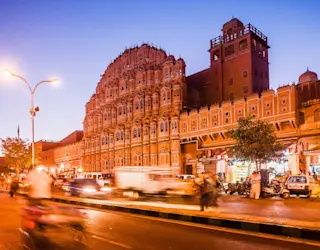
Nubra Valley to Jaipur taxi | ||
| Honda WRV Petrol MT Sunroof | ₹4500/day | Book Now |
| Alto 800 Petrol | ₹1800/day | Book Now |
| Tata Tiago MT Diesel | ₹1800/day | Book Now |
| Hyundai Aura MT Diesel | ₹2000/day | Book Now |
| Maruti Celerio AT Petrol | ₹2000/day | Book Now |
| Maruti Swift MT Petrol | ₹12/Km | Book Now |
| Hyundai Creata MT Diesel | ₹4000/day | Book Now |
| Hyundai I10 grand MT Petrol | ₹2000/day | Book Now |
| Hyundai i20 MT Diesel: | ₹3200/day | Book Now |
| Mahindra XUV 300, Sunroof MT | ₹4200/day | Book Now |
| Hyundai I10 grant MT Petrol | ₹2200/day | Book Now |
| Maruti S-Cross | ₹3500/day | Book Now |
| Maruti Breeza MT/AT Diesel | ₹3800/day | Book Now |
| Honda Amaze MT Diesel | ₹3200/day | Book Now |
| Maruti Dzire MT Diesel | ₹3000/day | Book Now |

Nubra Valley to Alwar taxi | ||
| Honda WRV Petrol MT Sunroof | ₹4500/day | Book Now |
| Alto 800 Petrol | ₹1800/day | Book Now |
| Tata Tiago MT Diesel | ₹1800/day | Book Now |
| Hyundai Aura MT Diesel | ₹2000/day | Book Now |
| Maruti Celerio AT Petrol | ₹2000/day | Book Now |
| Maruti Swift MT Petrol | ₹12/Km | Book Now |
| Hyundai Creata MT Diesel | ₹4000/day | Book Now |
| Hyundai I10 grand MT Petrol | ₹2000/day | Book Now |
| Hyundai i20 MT Diesel: | ₹3200/day | Book Now |
| Mahindra XUV 300, Sunroof MT | ₹4200/day | Book Now |
| Hyundai I10 grant MT Petrol | ₹2200/day | Book Now |
| Maruti S-Cross | ₹3500/day | Book Now |
| Maruti Breeza MT/AT Diesel | ₹3800/day | Book Now |
| Honda Amaze MT Diesel | ₹3200/day | Book Now |
| Maruti Dzire MT Diesel | ₹3000/day | Book Now |
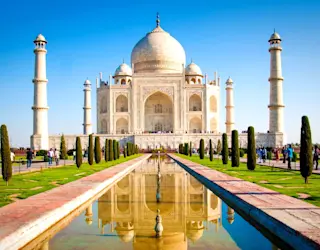
Nubra Valley to Agra taxi | ||
| Honda WRV Petrol MT Sunroof | ₹4500/day | Book Now |
| Alto 800 Petrol | ₹1800/day | Book Now |
| Tata Tiago MT Diesel | ₹1800/day | Book Now |
| Hyundai Aura MT Diesel | ₹2000/day | Book Now |
| Maruti Celerio AT Petrol | ₹2000/day | Book Now |
| Maruti Swift MT Petrol | ₹12/Km | Book Now |
| Hyundai Creata MT Diesel | ₹4000/day | Book Now |
| Hyundai I10 grand MT Petrol | ₹2000/day | Book Now |
| Hyundai i20 MT Diesel: | ₹3200/day | Book Now |
| Mahindra XUV 300, Sunroof MT | ₹4200/day | Book Now |
| Hyundai I10 grant MT Petrol | ₹2200/day | Book Now |
| Maruti S-Cross | ₹3500/day | Book Now |
| Maruti Breeza MT/AT Diesel | ₹3800/day | Book Now |
| Honda Amaze MT Diesel | ₹3200/day | Book Now |
| Maruti Dzire MT Diesel | ₹3000/day | Book Now |

Nubra Valley to Sanganer taxi | ||
| Honda WRV Petrol MT Sunroof | ₹4500/day | Book Now |
| Alto 800 Petrol | ₹1800/day | Book Now |
| Tata Tiago MT Diesel | ₹1800/day | Book Now |
| Hyundai Aura MT Diesel | ₹2000/day | Book Now |
| Maruti Celerio AT Petrol | ₹2000/day | Book Now |
| Maruti Swift MT Petrol | ₹12/Km | Book Now |
| Hyundai Creata MT Diesel | ₹4000/day | Book Now |
| Hyundai I10 grand MT Petrol | ₹2000/day | Book Now |
| Hyundai i20 MT Diesel: | ₹3200/day | Book Now |
| Mahindra XUV 300, Sunroof MT | ₹4200/day | Book Now |
| Hyundai I10 grant MT Petrol | ₹2200/day | Book Now |
| Maruti S-Cross | ₹3500/day | Book Now |
| Maruti Breeza MT/AT Diesel | ₹3800/day | Book Now |
| Honda Amaze MT Diesel | ₹3200/day | Book Now |
| Maruti Dzire MT Diesel | ₹3000/day | Book Now |

Nubra Valley to Chand Baori taxi | ||
| Honda WRV Petrol MT Sunroof | ₹4500/day | Book Now |
| Alto 800 Petrol | ₹1800/day | Book Now |
| Tata Tiago MT Diesel | ₹1800/day | Book Now |
| Hyundai Aura MT Diesel | ₹2000/day | Book Now |
| Maruti Celerio AT Petrol | ₹2000/day | Book Now |
| Maruti Swift MT Petrol | ₹12/Km | Book Now |
| Hyundai Creata MT Diesel | ₹4000/day | Book Now |
| Hyundai I10 grand MT Petrol | ₹2000/day | Book Now |
| Hyundai i20 MT Diesel: | ₹3200/day | Book Now |
| Mahindra XUV 300, Sunroof MT | ₹4200/day | Book Now |
| Hyundai I10 grant MT Petrol | ₹2200/day | Book Now |
| Maruti S-Cross | ₹3500/day | Book Now |
| Maruti Breeza MT/AT Diesel | ₹3800/day | Book Now |
| Honda Amaze MT Diesel | ₹3200/day | Book Now |
| Maruti Dzire MT Diesel | ₹3000/day | Book Now |

Nubra Valley to Malpura taxi | ||
| Honda WRV Petrol MT Sunroof | ₹4500/day | Book Now |
| Alto 800 Petrol | ₹1800/day | Book Now |
| Tata Tiago MT Diesel | ₹1800/day | Book Now |
| Hyundai Aura MT Diesel | ₹2000/day | Book Now |
| Maruti Celerio AT Petrol | ₹2000/day | Book Now |
| Maruti Swift MT Petrol | ₹12/Km | Book Now |
| Hyundai Creata MT Diesel | ₹4000/day | Book Now |
| Hyundai I10 grand MT Petrol | ₹2000/day | Book Now |
| Hyundai i20 MT Diesel: | ₹3200/day | Book Now |
| Mahindra XUV 300, Sunroof MT | ₹4200/day | Book Now |
| Hyundai I10 grant MT Petrol | ₹2200/day | Book Now |
| Maruti S-Cross | ₹3500/day | Book Now |
| Maruti Breeza MT/AT Diesel | ₹3800/day | Book Now |
| Honda Amaze MT Diesel | ₹3200/day | Book Now |
| Maruti Dzire MT Diesel | ₹3000/day | Book Now |
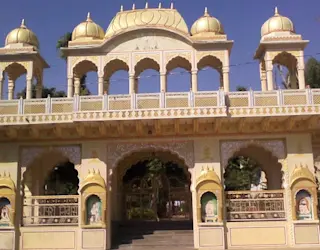
Nubra Valley to Triveni Dham taxi | ||
| Honda WRV Petrol MT Sunroof | ₹4500/day | Book Now |
| Alto 800 Petrol | ₹1800/day | Book Now |
| Tata Tiago MT Diesel | ₹1800/day | Book Now |
| Hyundai Aura MT Diesel | ₹2000/day | Book Now |
| Maruti Celerio AT Petrol | ₹2000/day | Book Now |
| Maruti Swift MT Petrol | ₹12/Km | Book Now |
| Hyundai Creata MT Diesel | ₹4000/day | Book Now |
| Hyundai I10 grand MT Petrol | ₹2000/day | Book Now |
| Hyundai i20 MT Diesel: | ₹3200/day | Book Now |
| Mahindra XUV 300, Sunroof MT | ₹4200/day | Book Now |
| Hyundai I10 grant MT Petrol | ₹2200/day | Book Now |
| Maruti S-Cross | ₹3500/day | Book Now |
| Maruti Breeza MT/AT Diesel | ₹3800/day | Book Now |
| Honda Amaze MT Diesel | ₹3200/day | Book Now |
| Maruti Dzire MT Diesel | ₹3000/day | Book Now |
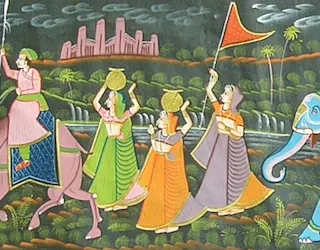
Nubra Valley to Kishangarh taxi | ||
| Honda WRV Petrol MT Sunroof | ₹4500/day | Book Now |
| Alto 800 Petrol | ₹1800/day | Book Now |
| Tata Tiago MT Diesel | ₹1800/day | Book Now |
| Hyundai Aura MT Diesel | ₹2000/day | Book Now |
| Maruti Celerio AT Petrol | ₹2000/day | Book Now |
| Maruti Swift MT Petrol | ₹12/Km | Book Now |
| Hyundai Creata MT Diesel | ₹4000/day | Book Now |
| Hyundai I10 grand MT Petrol | ₹2000/day | Book Now |
| Hyundai i20 MT Diesel: | ₹3200/day | Book Now |
| Mahindra XUV 300, Sunroof MT | ₹4200/day | Book Now |
| Hyundai I10 grant MT Petrol | ₹2200/day | Book Now |
| Maruti S-Cross | ₹3500/day | Book Now |
| Maruti Breeza MT/AT Diesel | ₹3800/day | Book Now |
| Honda Amaze MT Diesel | ₹3200/day | Book Now |
| Maruti Dzire MT Diesel | ₹3000/day | Book Now |

Nubra Valley to Ajmer taxi | ||
| Honda WRV Petrol MT Sunroof | ₹4500/day | Book Now |
| Alto 800 Petrol | ₹1800/day | Book Now |
| Tata Tiago MT Diesel | ₹1800/day | Book Now |
| Hyundai Aura MT Diesel | ₹2000/day | Book Now |
| Maruti Celerio AT Petrol | ₹2000/day | Book Now |
| Maruti Swift MT Petrol | ₹12/Km | Book Now |
| Hyundai Creata MT Diesel | ₹4000/day | Book Now |
| Hyundai I10 grand MT Petrol | ₹2000/day | Book Now |
| Hyundai i20 MT Diesel: | ₹3200/day | Book Now |
| Mahindra XUV 300, Sunroof MT | ₹4200/day | Book Now |
| Hyundai I10 grant MT Petrol | ₹2200/day | Book Now |
| Maruti S-Cross | ₹3500/day | Book Now |
| Maruti Breeza MT/AT Diesel | ₹3800/day | Book Now |
| Honda Amaze MT Diesel | ₹3200/day | Book Now |
| Maruti Dzire MT Diesel | ₹3000/day | Book Now |
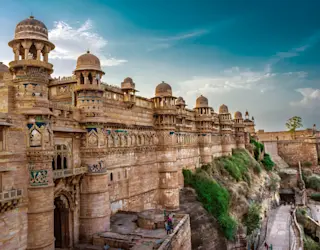
Nubra Valley to Pushkar taxi | ||
| Honda WRV Petrol MT Sunroof | ₹4500/day | Book Now |
| Alto 800 Petrol | ₹1800/day | Book Now |
| Tata Tiago MT Diesel | ₹1800/day | Book Now |
| Hyundai Aura MT Diesel | ₹2000/day | Book Now |
| Maruti Celerio AT Petrol | ₹2000/day | Book Now |
| Maruti Swift MT Petrol | ₹12/Km | Book Now |
| Hyundai Creata MT Diesel | ₹4000/day | Book Now |
| Hyundai I10 grand MT Petrol | ₹2000/day | Book Now |
| Hyundai i20 MT Diesel: | ₹3200/day | Book Now |
| Mahindra XUV 300, Sunroof MT | ₹4200/day | Book Now |
| Hyundai I10 grant MT Petrol | ₹2200/day | Book Now |
| Maruti S-Cross | ₹3500/day | Book Now |
| Maruti Breeza MT/AT Diesel | ₹3800/day | Book Now |
| Honda Amaze MT Diesel | ₹3200/day | Book Now |
| Maruti Dzire MT Diesel | ₹3000/day | Book Now |
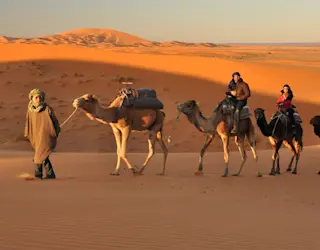
Nubra Valley to Jaisalmer taxi | ||
| Honda WRV Petrol MT Sunroof | ₹4500/day | Book Now |
| Alto 800 Petrol | ₹1800/day | Book Now |
| Tata Tiago MT Diesel | ₹1800/day | Book Now |
| Hyundai Aura MT Diesel | ₹2000/day | Book Now |
| Maruti Celerio AT Petrol | ₹2000/day | Book Now |
| Maruti Swift MT Petrol | ₹12/Km | Book Now |
| Hyundai Creata MT Diesel | ₹4000/day | Book Now |
| Hyundai I10 grand MT Petrol | ₹2000/day | Book Now |
| Hyundai i20 MT Diesel: | ₹3200/day | Book Now |
| Mahindra XUV 300, Sunroof MT | ₹4200/day | Book Now |
| Hyundai I10 grant MT Petrol | ₹2200/day | Book Now |
| Maruti S-Cross | ₹3500/day | Book Now |
| Maruti Breeza MT/AT Diesel | ₹3800/day | Book Now |
| Honda Amaze MT Diesel | ₹3200/day | Book Now |
| Maruti Dzire MT Diesel | ₹3000/day | Book Now |

Nubra Valley to Bundi taxi | ||
| Honda WRV Petrol MT Sunroof | ₹4500/day | Book Now |
| Alto 800 Petrol | ₹1800/day | Book Now |
| Tata Tiago MT Diesel | ₹1800/day | Book Now |
| Hyundai Aura MT Diesel | ₹2000/day | Book Now |
| Maruti Celerio AT Petrol | ₹2000/day | Book Now |
| Maruti Swift MT Petrol | ₹12/Km | Book Now |
| Hyundai Creata MT Diesel | ₹4000/day | Book Now |
| Hyundai I10 grand MT Petrol | ₹2000/day | Book Now |
| Hyundai i20 MT Diesel: | ₹3200/day | Book Now |
| Mahindra XUV 300, Sunroof MT | ₹4200/day | Book Now |
| Hyundai I10 grant MT Petrol | ₹2200/day | Book Now |
| Maruti S-Cross | ₹3500/day | Book Now |
| Maruti Breeza MT/AT Diesel | ₹3800/day | Book Now |
| Honda Amaze MT Diesel | ₹3200/day | Book Now |
| Maruti Dzire MT Diesel | ₹3000/day | Book Now |

Nubra Valley to Ranthambore taxi | ||
| Honda WRV Petrol MT Sunroof | ₹4500/day | Book Now |
| Alto 800 Petrol | ₹1800/day | Book Now |
| Tata Tiago MT Diesel | ₹1800/day | Book Now |
| Hyundai Aura MT Diesel | ₹2000/day | Book Now |
| Maruti Celerio AT Petrol | ₹2000/day | Book Now |
| Maruti Swift MT Petrol | ₹12/Km | Book Now |
| Hyundai Creata MT Diesel | ₹4000/day | Book Now |
| Hyundai I10 grand MT Petrol | ₹2000/day | Book Now |
| Hyundai i20 MT Diesel: | ₹3200/day | Book Now |
| Mahindra XUV 300, Sunroof MT | ₹4200/day | Book Now |
| Hyundai I10 grant MT Petrol | ₹2200/day | Book Now |
| Maruti S-Cross | ₹3500/day | Book Now |
| Maruti Breeza MT/AT Diesel | ₹3800/day | Book Now |
| Honda Amaze MT Diesel | ₹3200/day | Book Now |
| Maruti Dzire MT Diesel | ₹3000/day | Book Now |
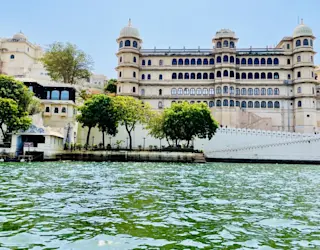
Nubra Valley to Udaipur taxi | ||
| Honda WRV Petrol MT Sunroof | ₹4500/day | Book Now |
| Alto 800 Petrol | ₹1800/day | Book Now |
| Tata Tiago MT Diesel | ₹1800/day | Book Now |
| Hyundai Aura MT Diesel | ₹2000/day | Book Now |
| Maruti Celerio AT Petrol | ₹2000/day | Book Now |
| Maruti Swift MT Petrol | ₹12/Km | Book Now |
| Hyundai Creata MT Diesel | ₹4000/day | Book Now |
| Hyundai I10 grand MT Petrol | ₹2000/day | Book Now |
| Hyundai i20 MT Diesel: | ₹3200/day | Book Now |
| Mahindra XUV 300, Sunroof MT | ₹4200/day | Book Now |
| Hyundai I10 grant MT Petrol | ₹2200/day | Book Now |
| Maruti S-Cross | ₹3500/day | Book Now |
| Maruti Breeza MT/AT Diesel | ₹3800/day | Book Now |
| Honda Amaze MT Diesel | ₹3200/day | Book Now |
| Maruti Dzire MT Diesel | ₹3000/day | Book Now |

Nubra Valley to Kota taxi | ||
| Honda WRV Petrol MT Sunroof | ₹4500/day | Book Now |
| Alto 800 Petrol | ₹1800/day | Book Now |
| Tata Tiago MT Diesel | ₹1800/day | Book Now |
| Hyundai Aura MT Diesel | ₹2000/day | Book Now |
| Maruti Celerio AT Petrol | ₹2000/day | Book Now |
| Maruti Swift MT Petrol | ₹12/Km | Book Now |
| Hyundai Creata MT Diesel | ₹4000/day | Book Now |
| Hyundai I10 grand MT Petrol | ₹2000/day | Book Now |
| Hyundai i20 MT Diesel: | ₹3200/day | Book Now |
| Mahindra XUV 300, Sunroof MT | ₹4200/day | Book Now |
| Hyundai I10 grant MT Petrol | ₹2200/day | Book Now |
| Maruti S-Cross | ₹3500/day | Book Now |
| Maruti Breeza MT/AT Diesel | ₹3800/day | Book Now |
| Honda Amaze MT Diesel | ₹3200/day | Book Now |
| Maruti Dzire MT Diesel | ₹3000/day | Book Now |

Nubra Valley to Ambala taxi | ||
| Honda WRV Petrol MT Sunroof | ₹4500/day | Book Now |
| Alto 800 Petrol | ₹1800/day | Book Now |
| Tata Tiago MT Diesel | ₹1800/day | Book Now |
| Hyundai Aura MT Diesel | ₹2000/day | Book Now |
| Maruti Celerio AT Petrol | ₹2000/day | Book Now |
| Maruti Swift MT Petrol | ₹12/Km | Book Now |
| Hyundai Creata MT Diesel | ₹4000/day | Book Now |
| Hyundai I10 grand MT Petrol | ₹2000/day | Book Now |
| Hyundai i20 MT Diesel: | ₹3200/day | Book Now |
| Mahindra XUV 300, Sunroof MT | ₹4200/day | Book Now |
| Hyundai I10 grant MT Petrol | ₹2200/day | Book Now |
| Maruti S-Cross | ₹3500/day | Book Now |
| Maruti Breeza MT/AT Diesel | ₹3800/day | Book Now |
| Honda Amaze MT Diesel | ₹3200/day | Book Now |
| Maruti Dzire MT Diesel | ₹3000/day | Book Now |

Nubra Valley to Panchkula taxi | ||
| Honda WRV Petrol MT Sunroof | ₹4500/day | Book Now |
| Alto 800 Petrol | ₹1800/day | Book Now |
| Tata Tiago MT Diesel | ₹1800/day | Book Now |
| Hyundai Aura MT Diesel | ₹2000/day | Book Now |
| Maruti Celerio AT Petrol | ₹2000/day | Book Now |
| Maruti Swift MT Petrol | ₹12/Km | Book Now |
| Hyundai Creata MT Diesel | ₹4000/day | Book Now |
| Hyundai I10 grand MT Petrol | ₹2000/day | Book Now |
| Hyundai i20 MT Diesel: | ₹3200/day | Book Now |
| Mahindra XUV 300, Sunroof MT | ₹4200/day | Book Now |
| Hyundai I10 grant MT Petrol | ₹2200/day | Book Now |
| Maruti S-Cross | ₹3500/day | Book Now |
| Maruti Breeza MT/AT Diesel | ₹3800/day | Book Now |
| Honda Amaze MT Diesel | ₹3200/day | Book Now |
| Maruti Dzire MT Diesel | ₹3000/day | Book Now |

Nubra Valley to Karnal taxi | ||
| Honda WRV Petrol MT Sunroof | ₹4500/day | Book Now |
| Alto 800 Petrol | ₹1800/day | Book Now |
| Tata Tiago MT Diesel | ₹1800/day | Book Now |
| Hyundai Aura MT Diesel | ₹2000/day | Book Now |
| Maruti Celerio AT Petrol | ₹2000/day | Book Now |
| Maruti Swift MT Petrol | ₹12/Km | Book Now |
| Hyundai Creata MT Diesel | ₹4000/day | Book Now |
| Hyundai I10 grand MT Petrol | ₹2000/day | Book Now |
| Hyundai i20 MT Diesel: | ₹3200/day | Book Now |
| Mahindra XUV 300, Sunroof MT | ₹4200/day | Book Now |
| Hyundai I10 grant MT Petrol | ₹2200/day | Book Now |
| Maruti S-Cross | ₹3500/day | Book Now |
| Maruti Breeza MT/AT Diesel | ₹3800/day | Book Now |
| Honda Amaze MT Diesel | ₹3200/day | Book Now |
| Maruti Dzire MT Diesel | ₹3000/day | Book Now |

Nubra Valley to Hisar taxi | ||
| Honda WRV Petrol MT Sunroof | ₹4500/day | Book Now |
| Alto 800 Petrol | ₹1800/day | Book Now |
| Tata Tiago MT Diesel | ₹1800/day | Book Now |
| Hyundai Aura MT Diesel | ₹2000/day | Book Now |
| Maruti Celerio AT Petrol | ₹2000/day | Book Now |
| Maruti Swift MT Petrol | ₹12/Km | Book Now |
| Hyundai Creata MT Diesel | ₹4000/day | Book Now |
| Hyundai I10 grand MT Petrol | ₹2000/day | Book Now |
| Hyundai i20 MT Diesel: | ₹3200/day | Book Now |
| Mahindra XUV 300, Sunroof MT | ₹4200/day | Book Now |
| Hyundai I10 grant MT Petrol | ₹2200/day | Book Now |
| Maruti S-Cross | ₹3500/day | Book Now |
| Maruti Breeza MT/AT Diesel | ₹3800/day | Book Now |
| Honda Amaze MT Diesel | ₹3200/day | Book Now |
| Maruti Dzire MT Diesel | ₹3000/day | Book Now |

Nubra Valley to Gurugram taxi | ||
| Honda WRV Petrol MT Sunroof | ₹4500/day | Book Now |
| Alto 800 Petrol | ₹1800/day | Book Now |
| Tata Tiago MT Diesel | ₹1800/day | Book Now |
| Hyundai Aura MT Diesel | ₹2000/day | Book Now |
| Maruti Celerio AT Petrol | ₹2000/day | Book Now |
| Maruti Swift MT Petrol | ₹12/Km | Book Now |
| Hyundai Creata MT Diesel | ₹4000/day | Book Now |
| Hyundai I10 grand MT Petrol | ₹2000/day | Book Now |
| Hyundai i20 MT Diesel: | ₹3200/day | Book Now |
| Mahindra XUV 300, Sunroof MT | ₹4200/day | Book Now |
| Hyundai I10 grant MT Petrol | ₹2200/day | Book Now |
| Maruti S-Cross | ₹3500/day | Book Now |
| Maruti Breeza MT/AT Diesel | ₹3800/day | Book Now |
| Honda Amaze MT Diesel | ₹3200/day | Book Now |
| Maruti Dzire MT Diesel | ₹3000/day | Book Now |

Nubra Valley to Panipat taxi | ||
| Honda WRV Petrol MT Sunroof | ₹4500/day | Book Now |
| Alto 800 Petrol | ₹1800/day | Book Now |
| Tata Tiago MT Diesel | ₹1800/day | Book Now |
| Hyundai Aura MT Diesel | ₹2000/day | Book Now |
| Maruti Celerio AT Petrol | ₹2000/day | Book Now |
| Maruti Swift MT Petrol | ₹12/Km | Book Now |
| Hyundai Creata MT Diesel | ₹4000/day | Book Now |
| Hyundai I10 grand MT Petrol | ₹2000/day | Book Now |
| Hyundai i20 MT Diesel: | ₹3200/day | Book Now |
| Mahindra XUV 300, Sunroof MT | ₹4200/day | Book Now |
| Hyundai I10 grant MT Petrol | ₹2200/day | Book Now |
| Maruti S-Cross | ₹3500/day | Book Now |
| Maruti Breeza MT/AT Diesel | ₹3800/day | Book Now |
| Honda Amaze MT Diesel | ₹3200/day | Book Now |
| Maruti Dzire MT Diesel | ₹3000/day | Book Now |

Nubra Valley to Sonipat taxi | ||
| Honda WRV Petrol MT Sunroof | ₹4500/day | Book Now |
| Alto 800 Petrol | ₹1800/day | Book Now |
| Tata Tiago MT Diesel | ₹1800/day | Book Now |
| Hyundai Aura MT Diesel | ₹2000/day | Book Now |
| Maruti Celerio AT Petrol | ₹2000/day | Book Now |
| Maruti Swift MT Petrol | ₹12/Km | Book Now |
| Hyundai Creata MT Diesel | ₹4000/day | Book Now |
| Hyundai I10 grand MT Petrol | ₹2000/day | Book Now |
| Hyundai i20 MT Diesel: | ₹3200/day | Book Now |
| Mahindra XUV 300, Sunroof MT | ₹4200/day | Book Now |
| Hyundai I10 grant MT Petrol | ₹2200/day | Book Now |
| Maruti S-Cross | ₹3500/day | Book Now |
| Maruti Breeza MT/AT Diesel | ₹3800/day | Book Now |
| Honda Amaze MT Diesel | ₹3200/day | Book Now |
| Maruti Dzire MT Diesel | ₹3000/day | Book Now |

Nubra Valley to Yamuna Nagar taxi | ||
| Honda WRV Petrol MT Sunroof | ₹4500/day | Book Now |
| Alto 800 Petrol | ₹1800/day | Book Now |
| Tata Tiago MT Diesel | ₹1800/day | Book Now |
| Hyundai Aura MT Diesel | ₹2000/day | Book Now |
| Maruti Celerio AT Petrol | ₹2000/day | Book Now |
| Maruti Swift MT Petrol | ₹12/Km | Book Now |
| Hyundai Creata MT Diesel | ₹4000/day | Book Now |
| Hyundai I10 grand MT Petrol | ₹2000/day | Book Now |
| Hyundai i20 MT Diesel: | ₹3200/day | Book Now |
| Mahindra XUV 300, Sunroof MT | ₹4200/day | Book Now |
| Hyundai I10 grant MT Petrol | ₹2200/day | Book Now |
| Maruti S-Cross | ₹3500/day | Book Now |
| Maruti Breeza MT/AT Diesel | ₹3800/day | Book Now |
| Honda Amaze MT Diesel | ₹3200/day | Book Now |
| Maruti Dzire MT Diesel | ₹3000/day | Book Now |

Nubra Valley to Doda taxi | ||
| Honda WRV Petrol MT Sunroof | ₹4500/day | Book Now |
| Alto 800 Petrol | ₹1800/day | Book Now |
| Tata Tiago MT Diesel | ₹1800/day | Book Now |
| Hyundai Aura MT Diesel | ₹2000/day | Book Now |
| Maruti Celerio AT Petrol | ₹2000/day | Book Now |
| Maruti Swift MT Petrol | ₹12/Km | Book Now |
| Hyundai Creata MT Diesel | ₹4000/day | Book Now |
| Hyundai I10 grand MT Petrol | ₹2000/day | Book Now |
| Hyundai i20 MT Diesel: | ₹3200/day | Book Now |
| Mahindra XUV 300, Sunroof MT | ₹4200/day | Book Now |
| Hyundai I10 grant MT Petrol | ₹2200/day | Book Now |
| Maruti S-Cross | ₹3500/day | Book Now |
| Maruti Breeza MT/AT Diesel | ₹3800/day | Book Now |
| Honda Amaze MT Diesel | ₹3200/day | Book Now |
| Maruti Dzire MT Diesel | ₹3000/day | Book Now |

Nubra Valley to Sonamarg taxi | ||
| Honda WRV Petrol MT Sunroof | ₹4500/day | Book Now |
| Alto 800 Petrol | ₹1800/day | Book Now |
| Tata Tiago MT Diesel | ₹1800/day | Book Now |
| Hyundai Aura MT Diesel | ₹2000/day | Book Now |
| Maruti Celerio AT Petrol | ₹2000/day | Book Now |
| Maruti Swift MT Petrol | ₹12/Km | Book Now |
| Hyundai Creata MT Diesel | ₹4000/day | Book Now |
| Hyundai I10 grand MT Petrol | ₹2000/day | Book Now |
| Hyundai i20 MT Diesel: | ₹3200/day | Book Now |
| Mahindra XUV 300, Sunroof MT | ₹4200/day | Book Now |
| Hyundai I10 grant MT Petrol | ₹2200/day | Book Now |
| Maruti S-Cross | ₹3500/day | Book Now |
| Maruti Breeza MT/AT Diesel | ₹3800/day | Book Now |
| Honda Amaze MT Diesel | ₹3200/day | Book Now |
| Maruti Dzire MT Diesel | ₹3000/day | Book Now |

Nubra Valley to Verinag taxi | ||
| Honda WRV Petrol MT Sunroof | ₹4500/day | Book Now |
| Alto 800 Petrol | ₹1800/day | Book Now |
| Tata Tiago MT Diesel | ₹1800/day | Book Now |
| Hyundai Aura MT Diesel | ₹2000/day | Book Now |
| Maruti Celerio AT Petrol | ₹2000/day | Book Now |
| Maruti Swift MT Petrol | ₹12/Km | Book Now |
| Hyundai Creata MT Diesel | ₹4000/day | Book Now |
| Hyundai I10 grand MT Petrol | ₹2000/day | Book Now |
| Hyundai i20 MT Diesel: | ₹3200/day | Book Now |
| Mahindra XUV 300, Sunroof MT | ₹4200/day | Book Now |
| Hyundai I10 grant MT Petrol | ₹2200/day | Book Now |
| Maruti S-Cross | ₹3500/day | Book Now |
| Maruti Breeza MT/AT Diesel | ₹3800/day | Book Now |
| Honda Amaze MT Diesel | ₹3200/day | Book Now |
| Maruti Dzire MT Diesel | ₹3000/day | Book Now |
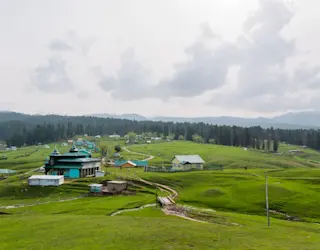
Nubra Valley to Yousmarg taxi | ||
| Honda WRV Petrol MT Sunroof | ₹4500/day | Book Now |
| Alto 800 Petrol | ₹1800/day | Book Now |
| Tata Tiago MT Diesel | ₹1800/day | Book Now |
| Hyundai Aura MT Diesel | ₹2000/day | Book Now |
| Maruti Celerio AT Petrol | ₹2000/day | Book Now |
| Maruti Swift MT Petrol | ₹12/Km | Book Now |
| Hyundai Creata MT Diesel | ₹4000/day | Book Now |
| Hyundai I10 grand MT Petrol | ₹2000/day | Book Now |
| Hyundai i20 MT Diesel: | ₹3200/day | Book Now |
| Mahindra XUV 300, Sunroof MT | ₹4200/day | Book Now |
| Hyundai I10 grant MT Petrol | ₹2200/day | Book Now |
| Maruti S-Cross | ₹3500/day | Book Now |
| Maruti Breeza MT/AT Diesel | ₹3800/day | Book Now |
| Honda Amaze MT Diesel | ₹3200/day | Book Now |
| Maruti Dzire MT Diesel | ₹3000/day | Book Now |

Nubra Valley to Bathinda taxi | ||
| Honda WRV Petrol MT Sunroof | ₹4500/day | Book Now |
| Alto 800 Petrol | ₹1800/day | Book Now |
| Tata Tiago MT Diesel | ₹1800/day | Book Now |
| Hyundai Aura MT Diesel | ₹2000/day | Book Now |
| Maruti Celerio AT Petrol | ₹2000/day | Book Now |
| Maruti Swift MT Petrol | ₹12/Km | Book Now |
| Hyundai Creata MT Diesel | ₹4000/day | Book Now |
| Hyundai I10 grand MT Petrol | ₹2000/day | Book Now |
| Hyundai i20 MT Diesel: | ₹3200/day | Book Now |
| Mahindra XUV 300, Sunroof MT | ₹4200/day | Book Now |
| Hyundai I10 grant MT Petrol | ₹2200/day | Book Now |
| Maruti S-Cross | ₹3500/day | Book Now |
| Maruti Breeza MT/AT Diesel | ₹3800/day | Book Now |
| Honda Amaze MT Diesel | ₹3200/day | Book Now |
| Maruti Dzire MT Diesel | ₹3000/day | Book Now |

Nubra Valley to Harike Wetland taxi | ||
| Honda WRV Petrol MT Sunroof | ₹4500/day | Book Now |
| Alto 800 Petrol | ₹1800/day | Book Now |
| Tata Tiago MT Diesel | ₹1800/day | Book Now |
| Hyundai Aura MT Diesel | ₹2000/day | Book Now |
| Maruti Celerio AT Petrol | ₹2000/day | Book Now |
| Maruti Swift MT Petrol | ₹12/Km | Book Now |
| Hyundai Creata MT Diesel | ₹4000/day | Book Now |
| Hyundai I10 grand MT Petrol | ₹2000/day | Book Now |
| Hyundai i20 MT Diesel: | ₹3200/day | Book Now |
| Mahindra XUV 300, Sunroof MT | ₹4200/day | Book Now |
| Hyundai I10 grant MT Petrol | ₹2200/day | Book Now |
| Maruti S-Cross | ₹3500/day | Book Now |
| Maruti Breeza MT/AT Diesel | ₹3800/day | Book Now |
| Honda Amaze MT Diesel | ₹3200/day | Book Now |
| Maruti Dzire MT Diesel | ₹3000/day | Book Now |

Nubra Valley to Jalandhar taxi | ||
| Honda WRV Petrol MT Sunroof | ₹4500/day | Book Now |
| Alto 800 Petrol | ₹1800/day | Book Now |
| Tata Tiago MT Diesel | ₹1800/day | Book Now |
| Hyundai Aura MT Diesel | ₹2000/day | Book Now |
| Maruti Celerio AT Petrol | ₹2000/day | Book Now |
| Maruti Swift MT Petrol | ₹12/Km | Book Now |
| Hyundai Creata MT Diesel | ₹4000/day | Book Now |
| Hyundai I10 grand MT Petrol | ₹2000/day | Book Now |
| Hyundai i20 MT Diesel: | ₹3200/day | Book Now |
| Mahindra XUV 300, Sunroof MT | ₹4200/day | Book Now |
| Hyundai I10 grant MT Petrol | ₹2200/day | Book Now |
| Maruti S-Cross | ₹3500/day | Book Now |
| Maruti Breeza MT/AT Diesel | ₹3800/day | Book Now |
| Honda Amaze MT Diesel | ₹3200/day | Book Now |
| Maruti Dzire MT Diesel | ₹3000/day | Book Now |

Nubra Valley to Ludhiana taxi | ||
| Honda WRV Petrol MT Sunroof | ₹4500/day | Book Now |
| Alto 800 Petrol | ₹1800/day | Book Now |
| Tata Tiago MT Diesel | ₹1800/day | Book Now |
| Hyundai Aura MT Diesel | ₹2000/day | Book Now |
| Maruti Celerio AT Petrol | ₹2000/day | Book Now |
| Maruti Swift MT Petrol | ₹12/Km | Book Now |
| Hyundai Creata MT Diesel | ₹4000/day | Book Now |
| Hyundai I10 grand MT Petrol | ₹2000/day | Book Now |
| Hyundai i20 MT Diesel: | ₹3200/day | Book Now |
| Mahindra XUV 300, Sunroof MT | ₹4200/day | Book Now |
| Hyundai I10 grant MT Petrol | ₹2200/day | Book Now |
| Maruti S-Cross | ₹3500/day | Book Now |
| Maruti Breeza MT/AT Diesel | ₹3800/day | Book Now |
| Honda Amaze MT Diesel | ₹3200/day | Book Now |
| Maruti Dzire MT Diesel | ₹3000/day | Book Now |

Nubra Valley to Pathankot taxi | ||
| Honda WRV Petrol MT Sunroof | ₹4500/day | Book Now |
| Alto 800 Petrol | ₹1800/day | Book Now |
| Tata Tiago MT Diesel | ₹1800/day | Book Now |
| Hyundai Aura MT Diesel | ₹2000/day | Book Now |
| Maruti Celerio AT Petrol | ₹2000/day | Book Now |
| Maruti Swift MT Petrol | ₹12/Km | Book Now |
| Hyundai Creata MT Diesel | ₹4000/day | Book Now |
| Hyundai I10 grand MT Petrol | ₹2000/day | Book Now |
| Hyundai i20 MT Diesel: | ₹3200/day | Book Now |
| Mahindra XUV 300, Sunroof MT | ₹4200/day | Book Now |
| Hyundai I10 grant MT Petrol | ₹2200/day | Book Now |
| Maruti S-Cross | ₹3500/day | Book Now |
| Maruti Breeza MT/AT Diesel | ₹3800/day | Book Now |
| Honda Amaze MT Diesel | ₹3200/day | Book Now |
| Maruti Dzire MT Diesel | ₹3000/day | Book Now |

Nubra Valley to Patiala taxi | ||
| Honda WRV Petrol MT Sunroof | ₹4500/day | Book Now |
| Alto 800 Petrol | ₹1800/day | Book Now |
| Tata Tiago MT Diesel | ₹1800/day | Book Now |
| Hyundai Aura MT Diesel | ₹2000/day | Book Now |
| Maruti Celerio AT Petrol | ₹2000/day | Book Now |
| Maruti Swift MT Petrol | ₹12/Km | Book Now |
| Hyundai Creata MT Diesel | ₹4000/day | Book Now |
| Hyundai I10 grand MT Petrol | ₹2000/day | Book Now |
| Hyundai i20 MT Diesel: | ₹3200/day | Book Now |
| Mahindra XUV 300, Sunroof MT | ₹4200/day | Book Now |
| Hyundai I10 grant MT Petrol | ₹2200/day | Book Now |
| Maruti S-Cross | ₹3500/day | Book Now |
| Maruti Breeza MT/AT Diesel | ₹3800/day | Book Now |
| Honda Amaze MT Diesel | ₹3200/day | Book Now |
| Maruti Dzire MT Diesel | ₹3000/day | Book Now |

Nubra Valley to Kanpur taxi | ||
| Honda WRV Petrol MT Sunroof | ₹4500/day | Book Now |
| Alto 800 Petrol | ₹1800/day | Book Now |
| Tata Tiago MT Diesel | ₹1800/day | Book Now |
| Hyundai Aura MT Diesel | ₹2000/day | Book Now |
| Maruti Celerio AT Petrol | ₹2000/day | Book Now |
| Maruti Swift MT Petrol | ₹12/Km | Book Now |
| Hyundai Creata MT Diesel | ₹4000/day | Book Now |
| Hyundai I10 grand MT Petrol | ₹2000/day | Book Now |
| Hyundai i20 MT Diesel: | ₹3200/day | Book Now |
| Mahindra XUV 300, Sunroof MT | ₹4200/day | Book Now |
| Hyundai I10 grant MT Petrol | ₹2200/day | Book Now |
| Maruti S-Cross | ₹3500/day | Book Now |
| Maruti Breeza MT/AT Diesel | ₹3800/day | Book Now |
| Honda Amaze MT Diesel | ₹3200/day | Book Now |
| Maruti Dzire MT Diesel | ₹3000/day | Book Now |

Nubra Valley to Jhansi taxi | ||
| Honda WRV Petrol MT Sunroof | ₹4500/day | Book Now |
| Alto 800 Petrol | ₹1800/day | Book Now |
| Tata Tiago MT Diesel | ₹1800/day | Book Now |
| Hyundai Aura MT Diesel | ₹2000/day | Book Now |
| Maruti Celerio AT Petrol | ₹2000/day | Book Now |
| Maruti Swift MT Petrol | ₹12/Km | Book Now |
| Hyundai Creata MT Diesel | ₹4000/day | Book Now |
| Hyundai I10 grand MT Petrol | ₹2000/day | Book Now |
| Hyundai i20 MT Diesel: | ₹3200/day | Book Now |
| Mahindra XUV 300, Sunroof MT | ₹4200/day | Book Now |
| Hyundai I10 grant MT Petrol | ₹2200/day | Book Now |
| Maruti S-Cross | ₹3500/day | Book Now |
| Maruti Breeza MT/AT Diesel | ₹3800/day | Book Now |
| Honda Amaze MT Diesel | ₹3200/day | Book Now |
| Maruti Dzire MT Diesel | ₹3000/day | Book Now |

Nubra Valley to Almora taxi | ||
| Honda WRV Petrol MT Sunroof | ₹4500/day | Book Now |
| Alto 800 Petrol | ₹1800/day | Book Now |
| Tata Tiago MT Diesel | ₹1800/day | Book Now |
| Hyundai Aura MT Diesel | ₹2000/day | Book Now |
| Maruti Celerio AT Petrol | ₹2000/day | Book Now |
| Maruti Swift MT Petrol | ₹12/Km | Book Now |
| Hyundai Creata MT Diesel | ₹4000/day | Book Now |
| Hyundai I10 grand MT Petrol | ₹2000/day | Book Now |
| Hyundai i20 MT Diesel: | ₹3200/day | Book Now |
| Mahindra XUV 300, Sunroof MT | ₹4200/day | Book Now |
| Hyundai I10 grant MT Petrol | ₹2200/day | Book Now |
| Maruti S-Cross | ₹3500/day | Book Now |
| Maruti Breeza MT/AT Diesel | ₹3800/day | Book Now |
| Honda Amaze MT Diesel | ₹3200/day | Book Now |
| Maruti Dzire MT Diesel | ₹3000/day | Book Now |

Nubra Valley to Haridwar taxi | ||
| Honda WRV Petrol MT Sunroof | ₹4500/day | Book Now |
| Alto 800 Petrol | ₹1800/day | Book Now |
| Tata Tiago MT Diesel | ₹1800/day | Book Now |
| Hyundai Aura MT Diesel | ₹2000/day | Book Now |
| Maruti Celerio AT Petrol | ₹2000/day | Book Now |
| Maruti Swift MT Petrol | ₹12/Km | Book Now |
| Hyundai Creata MT Diesel | ₹4000/day | Book Now |
| Hyundai I10 grand MT Petrol | ₹2000/day | Book Now |
| Hyundai i20 MT Diesel: | ₹3200/day | Book Now |
| Mahindra XUV 300, Sunroof MT | ₹4200/day | Book Now |
| Hyundai I10 grant MT Petrol | ₹2200/day | Book Now |
| Maruti S-Cross | ₹3500/day | Book Now |
| Maruti Breeza MT/AT Diesel | ₹3800/day | Book Now |
| Honda Amaze MT Diesel | ₹3200/day | Book Now |
| Maruti Dzire MT Diesel | ₹3000/day | Book Now |

Nubra Valley to Hunder taxi | ||
| Honda WRV Petrol MT Sunroof | ₹4500/day | Book Now |
| Alto 800 Petrol | ₹1800/day | Book Now |
| Tata Tiago MT Diesel | ₹1800/day | Book Now |
| Hyundai Aura MT Diesel | ₹2000/day | Book Now |
| Maruti Celerio AT Petrol | ₹2000/day | Book Now |
| Maruti Swift MT Petrol | ₹12/Km | Book Now |
| Hyundai Creata MT Diesel | ₹4000/day | Book Now |
| Hyundai I10 grand MT Petrol | ₹2000/day | Book Now |
| Hyundai i20 MT Diesel: | ₹3200/day | Book Now |
| Mahindra XUV 300, Sunroof MT | ₹4200/day | Book Now |
| Hyundai I10 grant MT Petrol | ₹2200/day | Book Now |
| Maruti S-Cross | ₹3500/day | Book Now |
| Maruti Breeza MT/AT Diesel | ₹3800/day | Book Now |
| Honda Amaze MT Diesel | ₹3200/day | Book Now |
| Maruti Dzire MT Diesel | ₹3000/day | Book Now |

Nubra Valley to Lamayuru taxi | ||
| Honda WRV Petrol MT Sunroof | ₹4500/day | Book Now |
| Alto 800 Petrol | ₹1800/day | Book Now |
| Tata Tiago MT Diesel | ₹1800/day | Book Now |
| Hyundai Aura MT Diesel | ₹2000/day | Book Now |
| Maruti Celerio AT Petrol | ₹2000/day | Book Now |
| Maruti Swift MT Petrol | ₹12/Km | Book Now |
| Hyundai Creata MT Diesel | ₹4000/day | Book Now |
| Hyundai I10 grand MT Petrol | ₹2000/day | Book Now |
| Hyundai i20 MT Diesel: | ₹3200/day | Book Now |
| Mahindra XUV 300, Sunroof MT | ₹4200/day | Book Now |
| Hyundai I10 grant MT Petrol | ₹2200/day | Book Now |
| Maruti S-Cross | ₹3500/day | Book Now |
| Maruti Breeza MT/AT Diesel | ₹3800/day | Book Now |
| Honda Amaze MT Diesel | ₹3200/day | Book Now |
| Maruti Dzire MT Diesel | ₹3000/day | Book Now |

Nubra Valley to Chandigarh taxi | ||
| Honda WRV Petrol MT Sunroof | ₹4500/day | Book Now |
| Alto 800 Petrol | ₹1800/day | Book Now |
| Tata Tiago MT Diesel | ₹1800/day | Book Now |
| Hyundai Aura MT Diesel | ₹2000/day | Book Now |
| Maruti Celerio AT Petrol | ₹2000/day | Book Now |
| Maruti Swift MT Petrol | ₹12/Km | Book Now |
| Hyundai Creata MT Diesel | ₹4000/day | Book Now |
| Hyundai I10 grand MT Petrol | ₹2000/day | Book Now |
| Hyundai i20 MT Diesel: | ₹3200/day | Book Now |
| Mahindra XUV 300, Sunroof MT | ₹4200/day | Book Now |
| Hyundai I10 grant MT Petrol | ₹2200/day | Book Now |
| Maruti S-Cross | ₹3500/day | Book Now |
| Maruti Breeza MT/AT Diesel | ₹3800/day | Book Now |
| Honda Amaze MT Diesel | ₹3200/day | Book Now |
| Maruti Dzire MT Diesel | ₹3000/day | Book Now |

Nubra Valley to Delhi taxi | ||
| Honda WRV Petrol MT Sunroof | ₹4500/day | Book Now |
| Alto 800 Petrol | ₹1800/day | Book Now |
| Tata Tiago MT Diesel | ₹1800/day | Book Now |
| Hyundai Aura MT Diesel | ₹2000/day | Book Now |
| Maruti Celerio AT Petrol | ₹2000/day | Book Now |
| Maruti Swift MT Petrol | ₹12/Km | Book Now |
| Hyundai Creata MT Diesel | ₹4000/day | Book Now |
| Hyundai I10 grand MT Petrol | ₹2000/day | Book Now |
| Hyundai i20 MT Diesel: | ₹3200/day | Book Now |
| Mahindra XUV 300, Sunroof MT | ₹4200/day | Book Now |
| Hyundai I10 grant MT Petrol | ₹2200/day | Book Now |
| Maruti S-Cross | ₹3500/day | Book Now |
| Maruti Breeza MT/AT Diesel | ₹3800/day | Book Now |
| Honda Amaze MT Diesel | ₹3200/day | Book Now |
| Maruti Dzire MT Diesel | ₹3000/day | Book Now |

Nubra Valley to Khajuraho taxi | ||
| Honda WRV Petrol MT Sunroof | ₹4500/day | Book Now |
| Alto 800 Petrol | ₹1800/day | Book Now |
| Tata Tiago MT Diesel | ₹1800/day | Book Now |
| Hyundai Aura MT Diesel | ₹2000/day | Book Now |
| Maruti Celerio AT Petrol | ₹2000/day | Book Now |
| Maruti Swift MT Petrol | ₹12/Km | Book Now |
| Hyundai Creata MT Diesel | ₹4000/day | Book Now |
| Hyundai I10 grand MT Petrol | ₹2000/day | Book Now |
| Hyundai i20 MT Diesel: | ₹3200/day | Book Now |
| Mahindra XUV 300, Sunroof MT | ₹4200/day | Book Now |
| Hyundai I10 grant MT Petrol | ₹2200/day | Book Now |
| Maruti S-Cross | ₹3500/day | Book Now |
| Maruti Breeza MT/AT Diesel | ₹3800/day | Book Now |
| Honda Amaze MT Diesel | ₹3200/day | Book Now |
| Maruti Dzire MT Diesel | ₹3000/day | Book Now |

Nubra Valley to Jodhpur taxi | ||
| Honda WRV Petrol MT Sunroof | ₹4500/day | Book Now |
| Alto 800 Petrol | ₹1800/day | Book Now |
| Tata Tiago MT Diesel | ₹1800/day | Book Now |
| Hyundai Aura MT Diesel | ₹2000/day | Book Now |
| Maruti Celerio AT Petrol | ₹2000/day | Book Now |
| Maruti Swift MT Petrol | ₹12/Km | Book Now |
| Hyundai Creata MT Diesel | ₹4000/day | Book Now |
| Hyundai I10 grand MT Petrol | ₹2000/day | Book Now |
| Hyundai i20 MT Diesel: | ₹3200/day | Book Now |
| Mahindra XUV 300, Sunroof MT | ₹4200/day | Book Now |
| Hyundai I10 grant MT Petrol | ₹2200/day | Book Now |
| Maruti S-Cross | ₹3500/day | Book Now |
| Maruti Breeza MT/AT Diesel | ₹3800/day | Book Now |
| Honda Amaze MT Diesel | ₹3200/day | Book Now |
| Maruti Dzire MT Diesel | ₹3000/day | Book Now |

Nubra Valley to Mody School taxi | ||
| Honda WRV Petrol MT Sunroof | ₹4500/day | Book Now |
| Alto 800 Petrol | ₹1800/day | Book Now |
| Tata Tiago MT Diesel | ₹1800/day | Book Now |
| Hyundai Aura MT Diesel | ₹2000/day | Book Now |
| Maruti Celerio AT Petrol | ₹2000/day | Book Now |
| Maruti Swift MT Petrol | ₹12/Km | Book Now |
| Hyundai Creata MT Diesel | ₹4000/day | Book Now |
| Hyundai I10 grand MT Petrol | ₹2000/day | Book Now |
| Hyundai i20 MT Diesel: | ₹3200/day | Book Now |
| Mahindra XUV 300, Sunroof MT | ₹4200/day | Book Now |
| Hyundai I10 grant MT Petrol | ₹2200/day | Book Now |
| Maruti S-Cross | ₹3500/day | Book Now |
| Maruti Breeza MT/AT Diesel | ₹3800/day | Book Now |
| Honda Amaze MT Diesel | ₹3200/day | Book Now |
| Maruti Dzire MT Diesel | ₹3000/day | Book Now |

Nubra Valley to Qutub Minar taxi | ||
| Honda WRV Petrol MT Sunroof | ₹4500/day | Book Now |
| Alto 800 Petrol | ₹1800/day | Book Now |
| Tata Tiago MT Diesel | ₹1800/day | Book Now |
| Hyundai Aura MT Diesel | ₹2000/day | Book Now |
| Maruti Celerio AT Petrol | ₹2000/day | Book Now |
| Maruti Swift MT Petrol | ₹12/Km | Book Now |
| Hyundai Creata MT Diesel | ₹4000/day | Book Now |
| Hyundai I10 grand MT Petrol | ₹2000/day | Book Now |
| Hyundai i20 MT Diesel: | ₹3200/day | Book Now |
| Mahindra XUV 300, Sunroof MT | ₹4200/day | Book Now |
| Hyundai I10 grant MT Petrol | ₹2200/day | Book Now |
| Maruti S-Cross | ₹3500/day | Book Now |
| Maruti Breeza MT/AT Diesel | ₹3800/day | Book Now |
| Honda Amaze MT Diesel | ₹3200/day | Book Now |
| Maruti Dzire MT Diesel | ₹3000/day | Book Now |
Luxury cars for Nubra Valley

Frequently Asked Questions
Experience Nubra Valley, Ladakh's enchanting high-altitude desert oasis nestled at 10,000 feet between the Karakoram and Ladakh ranges. This surreal landscape features white sand dunes, rare double-humped Bactrian camels, ancient Buddhist monasteries, hot springs, and apricot orchards, creating a magical contrast of desert and snow-capped mountains.
Table of Contents
Overview of Nubra Valley
Best Time to Visit
How to Reach Nubra Valley
Places to Visit and Distances
Top 10 Most Visited Destinations
Things to Do in Nubra Valley
What to Eat in Nubra Valley
Must-Buy Souvenirs
Tips Before Visiting Nubra Valley
Frequently Asked Questions
Nestled between the majestic Karakoram and Ladakh ranges at an elevation of approximately 10,000 feet (3,048 meters), Nubra Valley stands as one of India's most surreal and breathtaking landscapes. Often called the "Desert in the Sky" or "Valley of Flowers," this high-altitude cold desert creates a mesmerizing paradox of snow-capped mountains surrounding white sand dunes, creating a landscape that seems to belong to another world entirely.
Geographically, Nubra Valley is formed by the confluence of the Shyok and Nubra (Siachen) rivers, creating a Y-shaped valley that carves through the otherwise rugged and barren mountains. This remarkable river system has created pockets of fertile oases where local villages thrive with green fields and vibrant apricot, apple, and walnut orchards that stand in stark contrast to the surrounding arid terrain.
What makes Nubra truly exceptional is its ecological diversity. In Hunder, expansive sand dunes reminiscent of the Gobi Desert stretch across the landscape, while just a few kilometers away, lush greenery flourishes along riverbanks. This unique ecosystem supports the rare double-humped Bactrian camels – living relics of the ancient Silk Route that once passed through this valley connecting South Asia with Central Asia and beyond.
Culturally, Nubra Valley offers a fascinating blend of influences. The predominantly Buddhist population maintains ancient traditions, visible in the many monasteries (gompas) that dot the valley, with Diskit Monastery being the largest and most prominent. The northernmost accessible villages like Turtuk showcase distinct Balti culture with Islamic influences, having been part of Pakistan until 1971, adding another layer to the valley's rich cultural tapestry.
Historically significant as a crucial trade route, today Nubra holds strategic importance due to its proximity to both the Chinese and Pakistani borders, as well as being the gateway to the Siachen Glacier – often called the world's highest battlefield. This geopolitical significance meant the valley remained closed to tourists until 1994, and even today, visitors require special permits to enter this sensitive border region.
The villages of Nubra – Diskit, Hunder, Sumur, Panamik, and Turtuk – each offer unique experiences. From the hot springs of Panamik with purported medicinal properties to the ancient monasteries perched on rocky outcrops, from sand dune adventures to tranquil apricot orchards, Nubra presents a diversity of experiences that belie its remote location.
Despite increasing tourism, Nubra Valley retains an unspoiled, otherworldly charm. The limited connectivity, permit requirements, and extreme weather conditions have helped preserve its pristine beauty and authentic cultural experiences. For travelers willing to venture beyond the ordinary, Nubra Valley offers a rare glimpse into a land where geography, history, and culture create an unforgettable high-altitude desert paradise.
Best Time to Visit
Nubra Valley experiences extreme seasonal variations, with each season offering dramatically different landscapes and experiences. Understanding these seasonal characteristics is crucial for planning your visit effectively.
Summer (May to August)
Temperature Range
: 10°C to 30°C (50°F to 86°F)
Highlights
: Maximum accessibility, flowing rivers, green valleys, blooming wildflowers
Perfect For
: General sightseeing, camel safaris, monastery visits, village exploration
Festivals
: Possible monastic festivals (dates vary according to Tibetan calendar)
Considerations
: Peak tourist season, especially July-August; advance bookings recommended
Recommended For
: First-time visitors seeking comfortable conditions and full accessibility
Autumn (September to Mid-October)
Temperature Range
: 5°C to 20°C (41°F to 68°F)
Highlights
: Clear skies, golden orchards, harvest season, excellent photography conditions
Perfect For
: Photography, peaceful exploration, cultural experiences, trekking
Considerations
: Cooler evenings requiring warm clothing, reducing tourism infrastructure
Festivals
: Harvest celebrations in villages
Recommended For
: Photographers and travelers seeking balance between good weather and fewer crowds
Winter (Mid-October to April)
Temperature Range
: -25°C to 5°C (-13°F to 41°F)
Highlights
: Snow-covered landscapes, frozen rivers, extreme solitude, unique photography
Perfect For
: Adventure seekers, photographers, authentic local experiences
Considerations
: Extremely limited accessibility, minimal tourism infrastructure, most accommodations closed
Road Access
: Khardung La often closed; alternative routes may be inaccessible
Recommended For
: Experienced winter travelers seeking extreme adventures and unique photography
Important Note
: Only for serious adventurers with thorough preparation and local guidance
Spring (Late April to Early May)
Temperature Range
: 5°C to 20°C (41°F to 59°F)
Highlights
: Melting snow, flowing streams, early wildflowers, apricot blossoms
Perfect For
: Witnessing the transition from winter to summer
Considerations
: Unpredictable road conditions, possible delays, limited tourism operations
Recommended For
: Travelers comfortable with uncertainty who want to avoid peak season
Ideal Timing by Traveler Type
General Tourists
: Late June to early September for optimal conditions
Photographers
: Late September to early October for clear skies and dramatic landscapes
Adventure Seekers
: May-June for trekking; September-October for clearer trails
Budget Travelers
: Early May or early October (shoulder seasons) for lower prices
Cultural Enthusiasts
: Time visit with monastic festivals (check local calendars)
Stargazers
: September-October for clear night skies
Travel Tip
Weather in Ladakh is notoriously unpredictable. Always check the latest road conditions before travel, particularly regarding the status of Khardung La pass. Keep flexible days in your itinerary to accommodate potential delays. Regardless of season, carry layers as temperature variations between day and night can exceed 20°C.
How to Reach Nubra Valley
Reaching Nubra Valley involves crossing high mountain passes and navigating remote terrain. Here's a comprehensive guide to reaching this high-altitude desert oasis.
By Road from Leh
Distance
: 120-160 km depending on destination within Nubra (Diskit/Hunder/Sumur/Panamik)
Duration
: 5-7 hours including stops
Route
: Leh → Khardung La Pass (18,380 ft) → North Pullu → Khardung Village → Khalsar → Diskit/Hunder/Sumur/Panamik
Road Condition
: Well-maintained but mountainous with hairpin bends
Transport Options:
Private Taxi
: Most common and convenient (₹9,000-12,000 for round trip with 1-night stay)
Shared Taxi
: Available from Leh taxi stand (₹1,000-1,500 per seat)
Motorcycle Rental
: Popular among adventure enthusiasts (₹1,500-2,000 per day)
Public Bus
: Limited JKSRTC services (check current schedule at Leh bus station)
Important Stops:
Khardung La Pass (world's highest motorable pass) - mandatory photo stop
South and North Pullu checkpoints for permit verification
Khalsar junction where roads diverge to different parts of Nubra
Considerations:
Start early (6-7 AM) from Leh to maximize daylight hours in Nubra
Acclimatize in Leh for at least 2 days before attempting Khardung La
Altitude sickness prevention essential at Khardung La
Alternative Route via Wari La
Distance
: 240 km from Leh to Diskit
Duration
: 8-10 hours
Route
: Leh → Karu → Sakti → Wari La Pass (17,427 ft) → Tangyar → Khalsar → Diskit
Road Condition
: Less maintained, suitable for experienced drivers only
When to Use
: When Khardung La is closed or for those wanting a less touristy route
Considerations
: Very limited services, ensure sufficient fuel and supplies
Transport Options
: Private taxis or personal vehicles only (no public transportation)
Important Note
: This route remains open for a shorter duration than Khardung La
From Pangong Lake to Nubra (Direct Route)
Distance
: 240 km from Pangong to Diskit
Duration
: 8-10 hours
Route
: Pangong Lake → Shyok Village → Agham → Khalsar → Diskit/Hunder
Road Condition
: Recently improved but still challenging in parts
Advantages
: Saves returning to Leh if combining both destinations
Considerations:
Special permit endorsement required for this route
Limited phone connectivity
Few places to stop for refreshments
Best attempted with experienced local drivers only
Transportation Within Nubra Valley
Between Nubra Locations:
Private taxi hire (₹2,500-3,500 per day)
Limited local shared vehicles between major villages
Motorcycle excellent for exploration if rented from Leh
Distance Between Key Points:
Diskit to Hunder: 8 km (15-20 minutes)
Diskit to Sumur: 35 km (1 hour)
Sumur to Panamik: 18 km (30-40 minutes)
Diskit to Turtuk: 80 km (3 hours)
Walking/Cycling:
Feasible between some villages (Diskit-Hunder)
Bicycle rentals limited but growing in availability
Permit Requirements
Inner Line Permit (ILP)
: Mandatory for all visitors to Nubra Valley
Obtaining Process:
Online application through website (
)
Through travel agencies in Leh
In-person at DC Office in Leh
Required Documents:
Valid ID proof (passport for foreigners, Aadhar/Voter ID for Indians)
Passport-sized photographs
Travel itinerary
Validity
: Generally 7 days
Cost:
Indian nationals: ₹400
Foreign nationals: ₹600
Additional environmental fee may apply
Important Note
: Permits checked at multiple checkpoints; keep multiple copies
Travel Tips
Acclimatize properly in Leh (minimum 2 days) before traveling to Nubra
Carry motion sickness remedies; the journey includes numerous switchbacks
Fill vehicle fuel tanks completely in Leh; limited fuel stations in Nubra
Download offline maps as phone connectivity is limited
Carry sufficient cash; ATMs extremely limited in Nubra
Vehicle breakdowns can occur; travel with reliable operators
During winter months (November-April), check road status before departing
Travel insurance strongly recommended for this remote region
Places to Visit and Distances
Nubra Valley encompasses several villages and attractions spread across its Y-shaped valley. Here's a comprehensive list of key destinations with distances from Diskit (the largest town in Nubra and common base).
Within Diskit Area (0-5 km)
Destination | Distance from Diskit | Travel Time | Transport Options |
Diskit Monastery | 2 km | 10 minutes | Walk, taxi |
Diskit Market | 0.5 km | 5 minutes | Walk |
Maitreya Buddha Statue | 2 km | 10 minutes | Walk, taxi |
Lala's Art Cafe | 1 km | 5 minutes | Walk |
Local Apricot Orchards | 1-3 km | 10-15 minutes | Walk, taxi |
Diskit Viewpoint | 3 km | 15 minutes | Walk, taxi |
Shyok River Viewpoint | 4 km | 20 minutes | Taxi |
Near Diskit (5-30 km)
Destination | Distance from Diskit | Travel Time | Transport Options |
Hunder Sand Dunes | 8 km | 15-20 minutes | Taxi, shared taxi |
Hunder Monastery | 10 km | 20 minutes | Taxi, shared taxi |
Villgae Walking Tour | 5-15 km | varies | Taxi drop-off + walking |
Desert Cultural Centre | 7 km | 15 minutes | Taxi |
Chamba Monastery | 25 km | 45 minutes | Taxi |
Zamskhang Palace | 30 km | 1 hour | Taxi |
Khalsar Junction | 20 km | 30-40 minutes | Taxi, shared taxi |
Warila Road Junction | 15 km | 25-30 minutes | Taxi |
Greater Nubra Region (30+ km)
Destination | Distance from Diskit | Travel Time | Transport Options |
Sumur Village | 35 km | 1 hour | Taxi, shared taxi |
Samstanling Monastery | 38 km | 1 hour 10 minutes | Taxi |
Panamik Hot Springs | 55 km | 1 hour 30 minutes | Taxi |
Yarab Tso (Hidden Lake) | 45 km | 1 hour 20 minutes + hike | Taxi + 15-minute hike |
Turtuk Village | 80 km | 3 hours | Taxi |
Thang Village | 90 km | 3 hours 30 minutes | Taxi |
Baigdandu Village | 55 km | 2 hours | Taxi |
Ensa Monastery | 60 km | 2 hours + hike | Taxi + 30-minute hike |
Entry/Exit Points and Major Passes
Destination | Distance from Diskit | Travel Time | Transport Options |
Khardung La Pass | 85 km | 3 hours | Taxi, shared taxi |
Wari La Pass | 100 km | 4 hours | Taxi (limited services) |
Leh City | 120 km | 5-6 hours | Taxi, shared taxi, bus |
North Pullu Checkpoint | 60 km | 2 hours | Taxi, shared taxi, bus |
Khalsar Junction | 20 km | 30-40 minutes | Taxi, shared taxi |
Important Notes about Distances
Travel times can vary significantly based on road conditions, weather, and military movement
Distances are approximate and may vary based on exact starting points
During summer months, river crossings might affect some routes
Winter travel times can more than double due to snow and ice
Some remote villages may require special permit mentions
Shared taxis typically operate only between major destinations (Diskit, Sumur, Panamik, Leh)
Road quality varies; some destinations involve rough roads requiring 4x4 vehicles
Always consult with local drivers about current conditions, especially for remote areas
Fuel availability limited to Diskit; plan accordingly for longer journeys
Allow extra time for photography stops – the landscapes are spectacular
Top 10 Most Visited Destinations
1. Hunder Sand Dunes
Distance from Diskit: 8 km Highlights: White sand dunes, double-humped Bactrian camel rides, desert landscape contrasting with mountains Best Time to Visit: May-September; golden hours (early morning/late afternoon) for photography Important Notes:
Home to rare double-humped Bactrian camels, descendants of ancient Silk Route caravans
Camel rides cost ₹300-500 per person for 15-30 minutes
Beautiful contrast of sand dunes against snow-capped mountains
Photography paradise, especially during golden hour lighting
Some basic accommodations and camping options available nearby
Small snack stalls and cafes operate during peak season
Cold desert ecosystem with unique flora adaptations
Strong winds common in afternoons; mornings typically calmer
Spring brings rare desert flowers in surrounding areas
Short hikes available to higher dune viewpoints
2. Diskit Monastery
Distance from Diskit: 2 km Highlights: Oldest and largest monastery in Nubra Valley (14th century), giant Maitreya Buddha statue, panoramic views Best Time to Visit: Year-round; morning prayers especially atmospheric Important Notes:
Founded in 14th century by Changzem Tserab Zangpo
Houses approximately 100 monks and ancient Buddhist scriptures
32-meter Maitreya Buddha statue visible from miles around
Spectacular views of Nubra Valley from monastery complex
Morning prayers start around 7 AM (visitor participation welcomed)
Buddhist festivals according to Tibetan lunar calendar
Museum displays ancient thangka paintings and artifacts
Modest dress expected (covered shoulders and knees)
Photography allowed in most areas (restrictions in main prayer hall)
Small donations appreciated for monastery maintenance
Takes 20-30 minutes to explore fully
3. Turtuk Village
Distance from Diskit: 80 km Highlights: Northernmost accessible village, Balti culture, apricot orchards, mountain views, traditional lifestyle Best Time to Visit: June-September Important Notes:
Part of Pakistan until 1971; opened to tourists only in 2010
Unique Balti culture distinct from rest of Ladakh
Muslim majority with distinctive cuisine and traditions
Known for exceptional apricot orchards and products
Traditional stone houses with intricate woodwork
Stunning views of Karakoram range including K2 on clear days
Local museum showcasing Balti heritage
Royal Palace of the former Yabgo dynasty can be visited
Limited accommodations; day trip or single night recommended
Modest dress appropriate for this conservative village
One of the most authentic cultural experiences in the region
4. Panamik Hot Springs
Distance from Diskit: 55 km Altitude: 10,442 feet (3,183 meters) Highlights: Natural hot sulfur springs, therapeutic properties, beautiful valley setting, closest point to Siachen Glacier Best Time to Visit: May-September Important Notes:
Believed to have medicinal properties for skin conditions and joint pain
Separate bathing areas for men and women
Especially refreshing during cooler months
Surrounded by green fields and mountain views
Once the last stop for caravans before crossing the mountains
Closest civilian point to Siachen Glacier (world's highest battlefield)
Small village with limited but growing tourism infrastructure
Simple accommodation options available
Approximately 1.5-hour drive from Diskit
Maintain respectful behavior as springs have local cultural significance
5. Samstanling Monastery
Distance from Diskit: 38 km (near Sumur village) Highlights: Beautiful 19th-century monastery, active monastic community, religious artifacts, peaceful atmosphere Best Time to Visit: Year-round; special atmosphere during morning prayers Important Notes:
Founded by Lama Tsultim Nima
Currently home to about 50-60 monks
Well-maintained with colorful religious paintings and murals
Ancient Buddhist scriptures and artifacts preserved here
Beautiful courtyard with mountain backdrop
Less visited than Diskit Monastery, offering more tranquil experience
Several prayer wheels surrounding the complex
Morning prayers open to respectful visitors
Small donations appreciated for monastery upkeep
Approximately 10-15 minutes walk from Sumur village
Takes about 45 minutes to explore fully
6. Yarab Tso (Hidden Lake)
Distance from Diskit: 45 km + short hike Highlights: Sacred emerald lake, peaceful atmosphere, spectacular mountain backdrop, spiritual significance Best Time to Visit: June-September Important Notes:
Sacred to locals; respectful behavior essential
Requires short 15-20 minute uphill hike from road
Emerald-colored waters believed to have healing properties
Relatively unknown to most tourists, providing solitude
Prayer flags surrounding the small lake
Located near Sumur village
Photography allowed but swimming prohibited (sacred site)
Traditional offerings can be seen around the lakeside
No facilities at the lake; bring water and essentials
Best visited in morning light for photography
Total visit takes approximately 1-2 hours including hike
7. Khardung La Pass
Distance from Diskit: 85 km (en route to/from Leh) Altitude: 18,380 feet (5,602 meters) – among world's highest motorable passes Highlights: Spectacular mountain views, sense of achievement, gateway to Nubra Valley Best Time to Visit: May-October Important Notes:
Mandatory transit point when traveling between Leh and Nubra Valley
Altitude sickness risk; spend minimal time at the pass
Small café operated by Indian army serves hot tea and maggi noodles
Souvenir shop and rudimentary toilet facilities available
Warning signs about altitude sickness should be heeded
Prayer flags and memorial stones add cultural element
Extremely cold year-round; warm clothing essential
Weather can change rapidly; check conditions before traveling
Heavy military presence due to strategic importance
Photography permitted in designated areas only
Best visited during transit rather than as separate destination
8. Ensa Monastery
Distance from Diskit: 60 km + trek Highlights: Remote ancient monastery, challenging access, unspoiled setting, few visitors Best Time to Visit: June-September Important Notes:
One of the most remote monasteries in the region
Requires 30-minute moderately difficult uphill hike from road
Ancient meditation caves nearby used by Buddhist monks
Founded by Lama Tsewang Purbu in 17th century
Very few tourists visit due to remote location
Located in Kyagar area beyond Panamik
Spectacular views of surrounding mountains
Basic structure but spiritually significant site
No facilities; bring water and essentials
Guide recommended as trail can be unclear
Total visit requires half-day commitment including travel time
9. Chamba Monastery
Distance from Diskit: 25 km Highlights: Less-visited monastery, beautiful location, peaceful atmosphere, cultural insights Best Time to Visit: May-October Important Notes:
Smaller than Diskit but offers more authentic, less touristy experience
Ancient Buddhist scriptures and artifacts
Friendly monks often willing to explain Buddhist practices
Stunning views of surrounding landscapes
Traditional Tibetan architecture and artwork
Morning prayers especially atmospheric
Few tourists visit, allowing personal experiences
Located in a small village offering glimpse of local life
Recent renovations have preserved historical elements
Approximately 45-minute drive from Diskit
Takes about 30 minutes to explore fully
10. Nubra-Shyok River Confluence
Distance from Diskit: 20 km Highlights: Dramatic meeting of two rivers, contrasting water colors, geological marvel, photographic opportunity Best Time to Visit: June-September when water flow is strongest Important Notes:
Distinctive color difference between the two rivers
Creates the Y-shaped valley that defines the region
Several viewpoints offering different perspectives
Dramatic mountain backdrop enhances the view
Strong currents make river activities unsafe
No formal facilities at viewpoints; roadside stops
Most impressive during summer when rivers are full
Best light for photography in early morning or late afternoon
Historical significance as ancient trade route followed these valleys
Located near Khalsar junction
Quick photo stop of 15-20 minutes typically sufficient
Things to Do in Nubra Valley
Nubra Valley offers diverse activities ranging from cultural immersion to outdoor adventures. Here's a comprehensive guide to experiences in this high-altitude desert region.
Cultural Experiences
Monastery Visits
Key Monasteries:
Diskit Monastery (largest in Nubra)
Samstanling Monastery (Sumur)
Hunder Monastery
Ensa Monastery (remote)
Experience
: Buddhist architecture, ancient scriptures, religious artwork, monastic life
Best Season
: Year-round; special atmosphere during morning prayers (typically 7-8 AM)
Cultural Significance
: Centers of Ladakhi Buddhist tradition for centuries
Photography
: Generally permitted in outer areas; restrictions in main prayer halls
Etiquette
: Remove shoes, speak softly, dress modestly, ask before photographing monks
Timing
: Allow 1-2 hours for main monasteries
Festivals
: Check lunar calendar for monastery festivals featuring masked dances
Village Exploration
Key Villages:
Turtuk (Balti culture)
Hundar (traditional Ladakhi)
Sumur (agricultural focus)
Panamik (hot springs)
Experience
: Traditional architecture, local lifestyle, agricultural practices
Best Season
: May-September when villages are most active
Cultural Insights
: Different villages showcase various ethnic influences
Interactions
: Locals generally friendly; basic Ladakhi phrases appreciated
Photography
: Ask permission before photographing people
Guided Walks
: Available through guesthouses or local guides (₹500-1,000)
Special Interest
: Turtuk's unique Balti architecture and Islamic influence
Activities
: Join locals during apricot harvest (July-August) in some villages
Cultural Museums and Heritage Sites
Locations:
Turtuk Royal House Museum
Gurdwara Pathar Sahib (en route)
Diskit cultural exhibits
Desert Cultural Centre (Hunder)
Experience
: Historical artifacts, traditional tools, cultural displays
Significance
: Preservation of Nubra's diverse ethnic heritage
Cost
: Small entrance donations (₹20-100) typically requested
Highlights
: Royal artifacts in Turtuk, Buddhist relics in Diskit
Photography
: Generally permitted; some restrictions may apply
Timing
: Allow 30-60 minutes per location
Language
: Exhibits primarily in English and Hindi
Local Festivals
Diskit Gustor Festival
: Two-day monastery festival featuring masked dances (dates vary by lunar calendar)
Hundur Folk Festival
: Traditional performances showcasing local culture (summer)
Turtuk Harvest Festival
: Agricultural celebrations in autumn
Experience
: Religious ceremonies, traditional dances, music, local gatherings
Participation
: Visitors welcome; respectful observation appreciated
Photography
: Excellent cultural photo opportunities
Timing
: Check local calendars as dates shift annually
Timing
: Check local calendars as dates shift annually
Planning Tip
: Build itinerary flexibility to accommodate festival discoveries
Adventure Activities
Camel Safaris
Location
: Hunder Sand Dunes
Cost
: ₹300-500 per person for 15-30 minutes
Best Season
: May-October
Experience
: Ride double-humped Bactrian camels across white sand dunes
Historical Significance
: These rare camels are descendants of Silk Route caravan animals
Photography
: Excellent opportunities, especially during golden hours
Timing
: Early morning or late afternoon recommended (better light, cooler temperatures)
Suitability
: All ages; children often ride with adults
Arrangements
: On-site booking at the dunes, no advance reservation needed
Additional
: Longer rides can sometimes be negotiated
Trekking and Hiking
Popular Routes:
Diskit to Hunder via mountain trail (moderate, 3-4 hours)
Sumur to Panamik ridge hike (moderate, 4-5 hours)
Turtuk altitude walks (easy to moderate, various durations)
Yarab Tso lake trek (easy, 30 minutes from road)
Best Season
: June-September for most treks
Requirements
: Moderate fitness, proper footwear, sun protection
Guided Options
: Available through guesthouses (₹1,000-2,500 per day)
Independent Hiking
: Possible on established routes; inform accommodation of plans
Altitude Considerations
: Already at 10,000+ feet; acclimatize properly before strenuous activity
Equipment
: Day pack, water, snacks, hat, sunscreen, light jacket
Wildlife Sightings
: Possible encounters with blue sheep, marmots, various bird species
Mountain Biking
Routes:
Diskit-Hunder loop (easy, 16 km round trip)
Sumur-Panamik route (moderate, 36 km round trip)
Advanced routes available for experienced cyclists
Rentals
: Limited availability in Nubra; better to arrange in Leh
Best Season
: June-September
Equipment
: Helmet essential; limited repair facilities available
Considerations
: High altitude affects performance; pace accordingly
Terrain
: Mostly paved roads with some gravel sections
Traffic
: Generally light except on main Leh-Diskit road
Guided Tours
: Some Leh-based operators offer guided cycling trips to Nubra
Independent Cycling
: Possible with proper preparation
River Expeditions
Activities
: Kayaking and rafting on Shyok River (seasonal)
Availability
: Limited; specialized operators from Leh
Best Season
: June-August when water levels suitable
Experience Level
: Intermediate to advanced; not for beginners
Arrangements
: Must be pre-booked in Leh
Safety
: Always go with professional guides familiar with local conditions
Duration
: Usually day trips with transport arrangements
Cost
: ₹2,500-5,000 per person including equipment and transportation
Considerations
: Water extremely cold even in summer; proper wetsuits required
Nature and Photography
Wildlife Spotting
Species to Watch For:
Snow leopard (extremely rare)
Blue sheep (bharal)
Golden eagle
Chukar partridge
Himalayan marmot
Various migratory birds
Best Locations
: Higher mountain slopes, river valleys, near Panamik
Best Timing
: Early morning and dusk
Equipment
: Binoculars and telephoto lenses recommended
Guided Options
: Specialized wildlife guides available through Leh agencies
Conservation
: All wildlife protected; observe from distance
Ethics
: No feeding or disturbing animals; pack out all trash
Photography Expeditions
Prime Locations:
Hunder sand dunes at sunrise/sunset
Diskit Monastery with Buddha statue
River confluences
Mountain panoramas from monastery viewpoints
Traditional village life
Khardung La pass landscapes
Best Light
: Golden hours (first hour after sunrise, last hour before sunset)
Unique Subjects:
Sand dunes against snow peaks
Double-humped camels
Buddhist ceremonies
Traditional agriculture
Night sky/astrophotography (minimal light pollution)
Challenges
: Extreme contrasts, dust protection for equipment
Permits
: Some areas restricted; respect no-photography signs
Guided Photo Tours
: Available from Leh (advance booking required)
Equipment Tips
: Dust protection, extra batteries, polarizing filters, tripod for low light
Hot Springs Experience
Location
: Panamik village
Cost
: Free or nominal entrance fee
Best Season
: Year-round; especially pleasant in cooler months
Experience
: Natural thermal waters with reported therapeutic properties
Facilities
: Basic; separate sections for men and women
Etiquette
: Modest bathing attire expected
Health Benefits
: Believed to help with joint pain and skin conditions
Timing
: Mornings less crowded; allow 1-2 hours including travel time
What to Bring
: Towel, change of clothes, modest swimwear
Nearby
: Small handicraft shops and tea stalls
Stargazing
Prime Locations
: Any area away from village lights
Best Season
: Clear nights May-October; new moon periods optimal
Experience
: Exceptional night skies due to high altitude and minimal light pollution
Visibility
: Milky Way clearly visible; numerous constellations
Equipment
: Optional telescope or binoculars; many stars visible to naked eye
Photography
: Long exposure equipment needed for night photography
Guided Options
: Limited but available through some guesthouses
Considerations
: Temperatures drop significantly at night; bring warm clothing
Timing
: Best viewing 1-2 hours after sunset
Special Experience
: Among the world's best stargazing locations
Seasonal Activities
Summer (May-August)
Apricot orchard visits when trees bearing fruit
River activities when water levels optimal
Longer daylight hours for extended exploration
Camel safaris in comfortable temperatures
Traditional agricultural activities in villages
Monastery festivals typically held in summer
Peak season for all standard attractions
Autumn (September-Early October)
Harvest activities in villages
Golden colors in orchards and poplar trees
Photography in crystal clear air
Pleasant temperatures for extended hiking
Less crowded experiences at major sites
Night temperatures dropping; excellent for hot springs
Last chance activities before winter closure
Winter (Mid-October-April)
Snow-covered landscape photography (for adventurous winter visitors)
Limited tourism; authentic local life experiences
Hot springs especially appealing in cold weather
Indoor cultural experiences
Traditional winter crafts demonstration
Note: Most tourism infrastructure closed; advance arrangements essential
Only for experienced winter travelers with local contacts
Day Trips Within Nubra
Diskit-Hunder Circuit
Distance
: 16 km round trip
Highlights
: Diskit Monastery, sand dunes, camel rides, local villages
Experience
: Core Nubra experience combining culture and unique landscape
Timing
: Full day with leisurely pace
Transport
: Taxi (₹1,500-2,000) or shared vehicle
Activities
: Monastery visit, sand dune exploration, camel ride, village walk
Meals
: Several dining options in both locations
Photography
: Excellent throughout the day
Suitability
: All travelers, minimal physical demands
Panamik-Sumur Exploration
Distance
: 55 km from Diskit (one-way)
Highlights
: Hot springs, Samstanling Monastery, Yarab Tso lake, village life
Experience
: Less-visited area with diverse attractions
Timing
: Full day from Diskit/Hunder
Transport
: Private taxi recommended (₹2,500-3,000 for day trip)
Activities
: Hot springs bathing, monastery visit, short trek to sacred lake
Meals
: Limited options; packed lunch recommended
Suitability
: All travelers; short optional hike to lake
Special Interest
: Medicinal hot springs, monastic life
Turtuk Cultural Immersion
Distance
: 80 km from Diskit (one-way)
Highlights
: Balti village, apricot orchards, traditional architecture, Royal House
Experience
: Distinctive culture different from rest of Ladakh
Timing
: Long day trip (early start recommended) or overnight stay
Transport
: Private taxi (₹4,000-5,000 for return trip)
Activities
: Village walk, cultural museum, traditional lunch, orchard visit
Meals
: Traditional Balti cuisine available in small local eateries
Photography
: Exceptional cultural and landscape opportunities
Suitability
: All travelers; involves walking on uneven village paths
Note
: Northernmost accessible village; unique cultural experience
What to Eat in Nubra Valley
Nubra Valley offers a unique culinary experience blending traditional Ladakhi cuisine with influences from Tibet, Central Asia, and in northern areas, Balti traditions. Though restaurant options are limited, the authentic local food available is a highlight of any visit.
Traditional Ladakhi Cuisine
Skyu
Description
: Thumb-sized pasta pieces hand-shaped and cooked with vegetables and occasionally meat
Ingredients
: Wheat flour, local vegetables (potatoes, turnips, carrots), sometimes mutton
Where to Try
: Local homes, guesthouses serving traditional meals
Cultural Significance
: Staple Ladakhi dish providing warmth and energy in high altitudes
Serving Style
: Served hot in bowls as a complete meal
Taste Profile
: Mild flavor with earthy notes from root vegetables
Variations
: Sometimes prepared with dried cheese (churpe) for added flavor
Nutritional Value
: Balanced carbohydrates and vegetables adapted for mountain living
Local Importance
: Comfort food with cultural significance
Meal Timing
: Typically served for lunch or dinner
Thukpa
Description
: Hearty noodle soup with vegetables and sometimes meat
Ingredients
: Hand-pulled noodles, seasonal vegetables, meat (optional), Ladakhi herbs
Where to Try
: Most restaurants and homestays
Price Range
: ₹150-250
Health Benefits
: Warming, nutritious complete meal ideal for high altitudes
Popularity
: Essential high-altitude comfort food
Variations
: Several regional variants with different ingredients
Spice Level
: Generally mild but can be customized
Serving Size
: Generous portions as a meal in itself
Accompaniments
: Sometimes served with momos for a complete meal
Chhutagi
Description
: Bow-tie shaped pasta in vegetable stew
Ingredients
: Wheat flour pasta, root vegetables, local herbs
Where to Try
: Homestays, traditional Ladakhi kitchens
Cultural Significance
: Traditional winter dish in Ladakhi homes
Preparation
: Hand-shaped pasta added to slow-cooked vegetables
Taste Profile
: Subtle flavors emphasizing the natural taste of ingredients
Variations
: Sometimes includes dried yak cheese for stronger flavor
Nutritional Value
: Hearty, energy-rich dish ideal for cold climate
Authenticity
: Rarely found in commercial restaurants; best experienced in homestays
Similar to
: Skyu but with differently shaped pasta
Tingmo
Description
: Steamed bread with a fluffy, layered texture
Best Served With
: Vegetable curries or stews
Where to Try
: Most local eateries and homestays
Cultural Origin
: Tibetan influence in Ladakhi cuisine
Preparation
: Yeast-leavened dough steamed to perfection
Texture
: Light and airy with visible spiral layers
Variations
: Sometimes flavored with local herbs
Usage
: Used to scoop up curries or eaten plain
Meal Timing
: Common at all meals
Local Importance
: Essential bread accompaniment in Ladakhi meals
Regional Specialties
Apricot Dishes
Varieties:
Fresh apricots (seasonal July-September)
Dried apricots (available year-round)
Apricot jams and preserves
Apricot kernel oil (beauty product and flavoring)
Where to Find
: Local markets, especially in Turtuk and Hundar
Cultural Significance
: Nubra Valley famous for apricot orchards
Specialty Products
: Oils and creams made from kernels
Nutritional Value
: Rich in vitamins and antioxidants
Culinary Uses
: Fresh eating, desserts, flavoring for main dishes
Unique Experience
: Freshest apricots available directly from orchards
Seasonal Highlight
: Harvest season brings special apricot-based dishes
Souvenir Potential
: Preserved products make excellent gifts
Butter Tea (Po Cha)
Description
: Traditional tea churned with salt and yak butter
Cultural Significance
: Daily staple in Ladakhi households
Where to Try
: Homestays, monasteries, traditional houses
Taste Profile
: Savory, buttery flavor (acquired taste for many visitors)
Nutritional Value
: High calorie content provides energy at high altitudes
Serving Style
: Served in small bowls, traditionally refilled multiple times
Cultural Experience
: Accepting tea is important cultural courtesy
Modern Adaptations
: Sometimes made with cow butter instead of traditional yak butter
Temperature
: Always served hot, especially welcoming in cold weather
Local Belief
: Essential for maintaining energy in high-altitude climate
Turtuk Balti Cuisine
Unique Dishes:
Kisir (buckwheat pancakes)
Brakhsa (walnut paste with herbs)
Mamtu (meat-filled dumplings)
Where to Try
: Small eateries in Turtuk village
Cultural Significance
: Distinct from Ladakhi cuisine, showing Central Asian influence
Flavor Profile
: More spices and herbs than traditional Ladakhi food
Specialty Ingredients
: Walnuts, buckwheat, apricots feature prominently
Authenticity
: Best experienced in local homes or small family-run eateries
Dining Experience
: Often served in traditional Balti copper utensils
Special Arrangements
: Home dining experiences can sometimes be arranged through guesthouses
Vegetarian Options
: Available though less common in traditional preparation
Chang (Barley Beer)
Description
: Mild, slightly sour fermented barley beer
Alcohol Content
: Low (2-5%)
Where to Try
: Local homes, some guesthouses (not widely commercial)
Cultural Significance
: Traditionally served during celebrations and festivals
Serving Style
: Often served in small wooden cups
Production
: Home-brewed using traditional fermentation methods
Taste Profile
: Slightly tangy, refreshing, often compared to wheat beer
Variations
: Recipes vary between villages and families
Cultural Context
: Important element in local hospitality
Availability
: Not always available to tourists; often requires local connections
Dining Establishments
Guesthouse Dining
Characteristics:
Family-run operations serving authentic local food
Set meals with limited but fresh options
Often use produce from family gardens
Advance notice usually required for meals
Typical Options:
Breakfast: Tibetan bread, eggs, porridge, butter tea
Lunch/Dinner: Thukpa, rice, vegetables, momos
Price Range
: ₹200-400 per meal (often included in stay)
Dining Style
: Family-style, sometimes communal
Special Requests
: Dietary restrictions accommodated with advance notice
Authentic Experience
: Often the most genuine local cuisine
Social Aspect
: Opportunity to dine with other travelers and hosts
Local Restaurants
Availability
: Limited primarily to Diskit and Hunder
Price Range
: ₹150-350 per meal
Cuisine Types
: Primarily Ladakhi, Tibetan, basic North Indian
Notable Establishments:
Himalayan Cafe (Diskit)
Olathang Restaurant (Diskit)
Desert Himalaya Resort Restaurant (Hunder)
Lala's Art Cafe (Diskit)
Specialties
: Momos, thukpa, simple Indian dishes
Operating Seasons
: Most open only during tourist season (May-October)
Ambiance
: Simple, functional settings; some with mountain views
Service Style
: Relaxed pace; expect unhurried dining
Language
: Basic English menus increasingly available
Reservations
: Generally not required except for larger groups
Tented Camps and Resorts
Dining Options
: Set meals or limited menu
Cuisine Types
: Mixture of Ladakhi, Tibetan, North Indian, and basic Continental
Price Range
: ₹400-800 per meal (often included in packages)
Quality
: Generally higher standard than local eateries
Special Experiences
: Some offer dining under the stars or cultural performances
Adaptability
: Better equipped to handle special dietary requirements
Dining Hours
: More structured than local establishments
Beverage Options
: Wider selection including bottled beer and limited wines
Pre-ordering
: Many require meal choices in advance
Packed Lunches
: Available for day trips
Culinary Tips
Many traditional dishes are vegetarian-friendly despite Ladakh being traditionally meat-consuming
Advance notice for meals is customary and appreciated, especially in smaller establishments
Fresh ingredients highly seasonal due to short growing season
Pure vegetarians should clarify as some "vegetable" dishes may use meat stock
Water consumption critical at high altitude; drink plenty despite cooler temperatures
Most establishments serve only during tourist season (May-October)
Carrying some packaged snacks advisable for day trips as food options limited outside villages
Alcohol limited primarily to larger hotels and camps; not widely available
Traditional eating often involves hands rather than cutlery
Try home-cooked meals when possible for most authentic experience
Must-Buy Souvenirs
Nubra Valley offers unique souvenirs that reflect its distinct cultural heritage and natural resources. Here's a guide to authentic local purchases.
Local Agricultural Products
Apricot Products
What to Buy:
Dried apricots (traditional sun-dried)
Apricot kernel oil (beauty product)
Apricot jam and preserves
Apricot-based beauty products
Price Range
: ₹150-600 depending on product
Where to Shop
: Village markets in Turtuk, Hundar, and Diskit
Authenticity Check
: Natural sun-dried apricots have darker color than commercial versions
Production
: Many products made by local women's cooperatives
Cultural Significance
: Nubra Valley famous for apricot cultivation
Storage
: Dried products travel well; oils should be properly sealed
Unique Value
: Oils and kernels used in traditional medicine and beauty treatments
Specialty
: Turtuk village produces particularly renowned apricots
Gift Potential
: Attractively packaged products make good gifts
Sea Buckthorn Products
What to Buy:
Sea buckthorn juice (vitamin-rich superfood)
Oil extracts
Berry preserves
Tea blends
Price Range
: ₹200-900
Where to Shop
: Specialty shops in Diskit, women's cooperatives
Health Benefits
: Extremely high vitamin C content, antioxidants
Unique Feature
: Grows wild in high-altitude desert conditions
Local Name
: Leh Berry
Taste Profile
: Tart and distinctive
Production
: Increasingly processed through local cooperatives
Cultural Usage
: Traditional medicine for generations
Packaging
: Look for properly sealed containers for transport
Authenticity
: Check for local production verification
Himalayan Herbal Products
What to Buy:
Mountain herb teas
Traditional medicinal herbs
Natural incense
Price Range
: ₹100-500
Where to Shop
: Monastery shops, local markets
Unique Value
: High-altitude herbs with distinctive properties
Cultural Usage
: Many used in traditional Tibetan medicine
Varieties
: Different preparations for various health benefits
Authentication
: Look for proper labeling with ingredient information
Ethical Sourcing
: Sustainably harvested herbs increasingly available
Learning Opportunity
: Vendors often explain traditional uses
Gift Potential
: Unique items not commonly found elsewhere
Packaging
: Simple but adequate for travel
Textiles and Clothing
Pashmina and Wool Products
What to Buy:
Authentic pashmina shawls and scarves
Yak wool blankets
Hand-knitted sweaters and socks
Traditional Ladakhi textiles
Price Range
: ₹1,000-15,000+ depending on quality
Where to Shop
: Diskit market, village craftspeople, women's cooperatives
Authenticity Check
: Real pashmina is incredibly soft, lighter than expected, and passes through a ring test
Production
: Hand-spun and woven items have slight irregularities
Regional Designs
: Look for distinctive Ladakhi patterns
Materials
: Pashmina goat wool, yak wool, sheep wool in various combinations
Cultural Significance
: Traditional craft adapted to extreme climate
Care Tips
: Dry clean only; proper storage prevents moth damage
Ethical Considerations
: Support fair-trade cooperatives when possible
Quality Variations
: Significant range from tourist quality to heirloom pieces
Traditional Headwear
What to Buy:
Ladakhi caps with earflaps
Ceremonial headpieces (replicas)
Balti traditional caps from Turtuk
Price Range
: ₹300-1,200
Where to Shop
: Village markets, cultural shops
Cultural Significance
: Different styles indicate regional and social affiliations
Materials
: Wool, sometimes with embroidery or fur trim
Authenticity
: Hand-made versus mass-produced tourist versions
Practical Use
: Well-adapted to local climate conditions
Gift Potential
: Unique, lightweight, and culturally significant
Variations
: Distinctive differences between Buddhist and Muslim community designs
Modern Adaptations
: Contemporary versions of traditional designs increasingly available
Prayer Flags
What to Buy:
Traditional Tibetan prayer flags with authentic scriptures
Different sizes from small strings to large flags
Price Range
: ₹100-500
Where to Shop
: Monastery shops, markets near Buddhist sites
Cultural Significance
: Carries prayers and blessings on the wind
Colors
: Five traditional colors representing elements
Authentic Usage
: Hang in high places to spread blessings
Printing
: Hand-blocked traditional versions versus machine-printed
Respect
: Purchase with intention to use respectfully
Traditional Belief
: Benefits all beings as prayers disperse in wind
Materials
: Cotton cloth with woodblock-printed mantras
Size Options
: From small car-size to large outdoor installation
Handicrafts
Buddhist Religious Items
What to Buy:
Prayer wheels (hand-held and desktop)
Singing bowls
Incense burners
Prayer beads
Ritual items
Price Range
: ₹300-5,000+
Where to Shop
: Monastery gift shops, Diskit market
Cultural Significance
: Items used in Buddhist practice for centuries
Materials
: Copper, brass, silver, wood depending on item
Craftsmanship
: Hand-made items with traditional designs
Authenticity
: Look for proper mantras and traditional construction
Respectful Purchase
: Buy with appreciation of religious significance
Usage Information
: Many sellers provide explanation of proper use
Sound Quality
: Test singing bowls before purchase
Size Variations
: Travel-friendly small versions to larger display pieces
Traditional Crafts
What to Buy:
Wooden items with traditional carving
Stone carvings of Buddhist symbols
Handmade paper products
Copper and brass utensils
Price Range
: ₹200-3,000
Where to Shop
: Village craft shops, Diskit market
Cultural Context
: Designs reflect Buddhist and local cultural motifs
Materials
: Locally sourced wood, stone, metal
Production
: Many items still made using traditional methods
Unique Features
: Designs specific to Ladakh region
Practical Items
: Kitchen utensils designed for local cooking methods
Decorative Value
: Distinctive appearance reflects Himalayan aesthetic
Variations
: Different styles from various villages and cultural traditions
Learning Opportunity
: Craftspeople sometimes demonstrate techniques
Jewelry
What to Buy:
Traditional silver pieces with turquoise and coral
Stone jewelry featuring local semi-precious stones
Cultural adornments and amulets
Price Range
: ₹500-5,000+
Where to Shop
: Specialized jewelers in Diskit, some monastery shops
Cultural Significance
: Traditional designs carry symbolic meanings
Materials
: Silver, copper, turquoise, coral, local stones
Regional Styles
: Distinctive Ladakhi designs versus Tibetan or Balti
Authenticity
: Hand-crafted pieces show individuality
Traditional Usage
: Many pieces traditionally had protective functions
Quality Variations
: Wide range from tourist-oriented to authentic craftsmanship
Weight
: Traditional pieces often substantially heavier than modern jewelry
Investment Value
: Higher-end pieces hold or increase value
Photography and Art
Buddhist Art
What to Buy:
Thangka paintings (religious scroll paintings)
Contemporary Buddhist-inspired artwork
Mandala paintings
Price Range
: ₹1,000-20,000+ depending on size and quality
Where to Shop
: Monastery shops, specialized art dealers
Authenticity
: Hand-painted versus printed reproductions
Materials
: Traditional mineral pigments on cotton canvas for quality pieces
Subject Matter
: Buddhist deities, mandalas, auspicious symbols
Cultural Significance
: Religious artworks following specific iconographic rules
Quality Indicators
: Fine detail work, proper proportions, traditional composition
Production Time
: Quality thangkas require months of detailed work
Display Considerations
: Traditional brocade framing, proper hanging height
Investment Potential
: Fine pieces appreciate in value
Photography Prints
What to Buy:
Professional photographs of local landscapes
Cultural documentation
Historical images
Price Range
: ₹300-2,000 depending on size and framing
Where to Shop
: Small galleries, guesthouses with displays
Subjects
: Sand dunes, monasteries, mountains, cultural portraits
Formats
: Prints, postcards, books, calendars
Support Local
: Purchases often support local photographers
Uniqueness
: Professional captures of fleeting moments and perfect conditions
Quality Range
: From souvenir-quality to fine art prints
Size Options
: Travel-friendly small prints to larger framed works
Personal Alternative
: Your own photographs can be excellent souvenirs
Books and Maps
What to Buy:
Books on Ladakhi culture and history
Coffee table photography books
Detailed trekking maps
Price Range
: ₹200-2,000
Where to Shop
: Bookshops in Leh, larger guesthouses in Nubra
Language Options
: English, Hindi, sometimes German/French
Topics
: History, Buddhism, cultural studies, trekking guides
Practical Value
: Maps useful for future trip planning
Cultural Insight
: Books provide context to experiences
Photography Books
: Visual reminders of landscapes and culture
Authenticity
: Look for locally produced or authored works
Weight Consideration
: Books add significant weight to luggage
Availability
: Limited selection in Nubra; better options in Leh
Shopping Locations
Diskit Market
Character
: Main commercial center of Nubra Valley
Best For
: General souvenirs, practical items, basic handicrafts
Operating Hours
: Morning to evening during tourist season
Bargaining
: Expected for most items without fixed prices
Atmosphere
: Small but functional market with authentic local character
Selection
: Modest but representative of local goods
Authenticity
: Mix of genuine local items and imported souvenirs
Services
: Some shipping possible for larger purchases
Languages
: Basic English widely understood
Additional
: Small restaurants and tea shops interspersed with stores
Monastery Shops
Locations
: Attached to major monasteries like Diskit and Samstanling
Best For
: Religious items, traditional crafts, books on Buddhism
Price Structure
: Generally fixed prices supporting monastery
Authenticity
: Items often made by monks or local artisans
Selection
: Focused on religious and cultural items
Unique Offerings
: Items blessed by monks, monastery-produced crafts
Operating Hours
: During monastery visiting hours
Shopping Experience
: Peaceful, unhurried atmosphere
Cultural Context
: Purchases support monastery maintenance
Specialty
: Unique items not found in regular markets
Village Handicraft Centers
Locations
: Various villages, particularly Turtuk and Sumur
Best For
: Authentic handmade items directly from artisans
Price Structure
: Lower than tourist areas, some bargaining appropriate
Unique Value
: Direct support to local communities
Shopping Experience
: Often includes demonstration of craft techniques
Selection
: Limited but authentic items specific to each village
Cultural Interaction
: Opportunity to meet craftspeople
Finding Them
: Ask at guesthouses for current locations
Languages
: May require translation assistance
Authenticity
: Highest level of genuine local craftsmanship
Shopping Tips
Bargaining is expected in markets but not in fixed-price shops or monastery stores
Quality varies significantly; inspect items carefully before purchase
Limited ATMs in Nubra; carry sufficient cash for purchases
Support local artisans when possible by buying directly
Ask about the story behind handicrafts for greater appreciation
Consider weight and fragility for transport when purchasing
Be aware of restrictions on antiques or certain organic materials
Keep receipts for higher-value purchases
Some shops offer shipping services for larger items
Purchase of religious items should be done respectfully
Tips Before Visiting Nubra Valley
Prepare for a memorable Nubra Valley experience with these essential tips covering everything from permits to practical considerations.
Essential Permits and Documentation
Inner Line Permit (ILP):
Mandatory for all visitors to Nubra Valley
Obtain online, through travel agencies in Leh, or at DC Office Leh
Typically valid for 7 days
Cost: ₹400 for Indian nationals, ₹600 for foreigners
Multiple copies required for checkpoints
Specific areas must be mentioned on permit
Keep original and at least 4-5 photocopies
Protected Area Permit (PAP):
Additional requirement for foreign nationals
Must be arranged through registered travel agencies
Requires group of 4+ foreign nationals (rules occasionally change)
Specific destinations must be listed
Identification Documents:
Always carry original ID (passport for foreigners, Aadhar/driving license for Indians)
Multiple photocopies recommended
Digital backups on phone/email
Military Checkpoints:
Numerous checkpoints along routes
Polite cooperation expected
Documentation inspected thoroughly
Photography restrictions at sensitive areas
Packing Essentials
Clothing:
Multiple layers regardless of season (temperature fluctuations of 20°C+ in a single day)
Warm jacket even in summer (nights are cold)
Sun hat, sunglasses, and bandana/buff (dust protection)
Comfortable walking shoes with good traction
Sandals for hot springs visits
Modest clothing for village and monastery visits
Health and Protection:
High SPF sunscreen (UV radiation intense at altitude)
Lip balm with sun protection
Moisturizer (extremely dry climate)
Personal first-aid kit including altitude sickness medication
Prescription medications in original packaging
Wet wipes and hand sanitizer
Water purification tablets or portable filter
Insect repellent for summer evenings
Rehydration salts/electrolyte powder
Equipment:
Headlamp or flashlight (power outages common)
Power bank (electricity unreliable)
Extra camera batteries (cold depletes charge)
Dust-proof camera bag
Water bottles (2-3 liters capacity total)
Small daypack for excursions
Trekking poles if planning hikes
Basic toiletries (limited availability# 🏜️ Comprehensive Guide to Nubra Valley: The Desert in the Sky




















